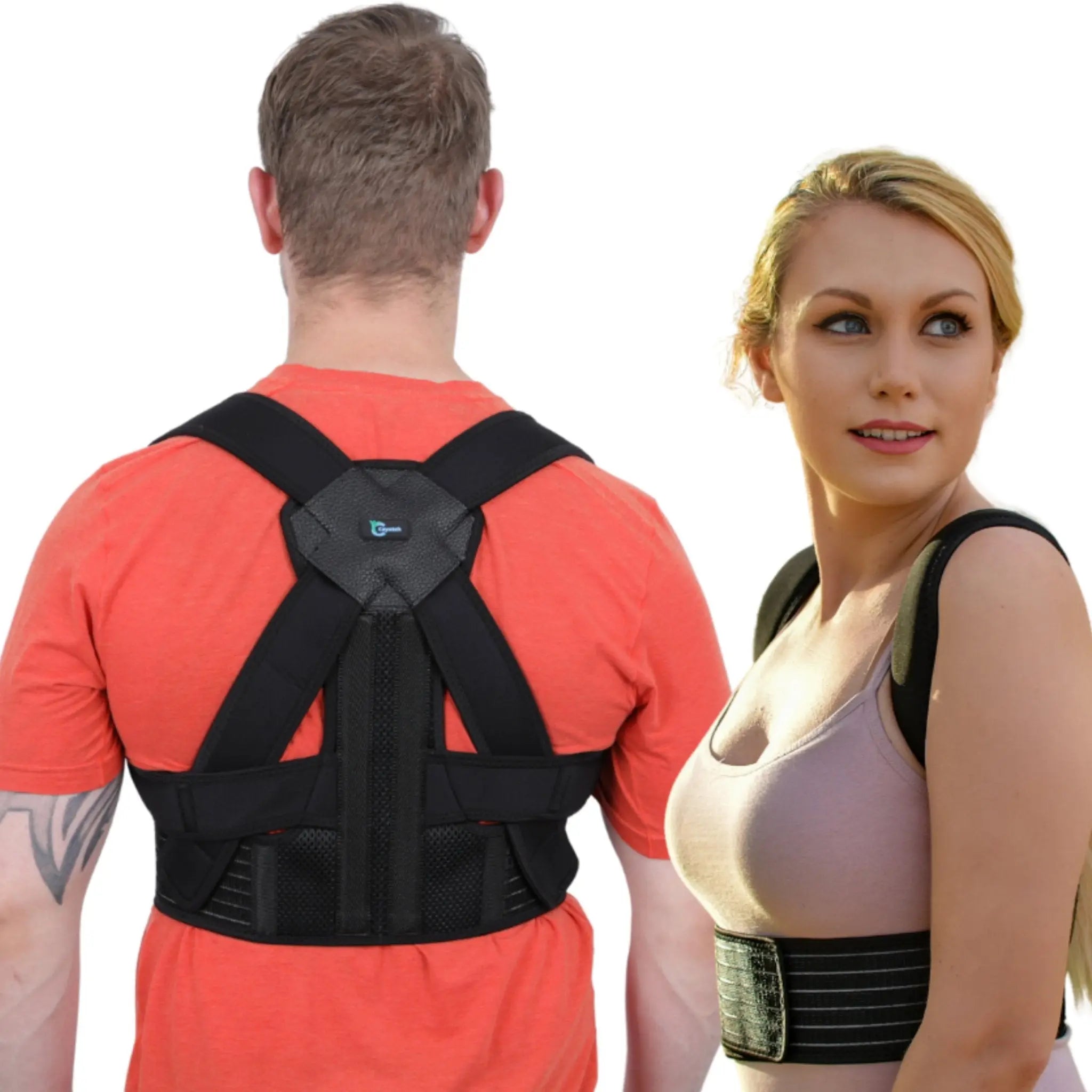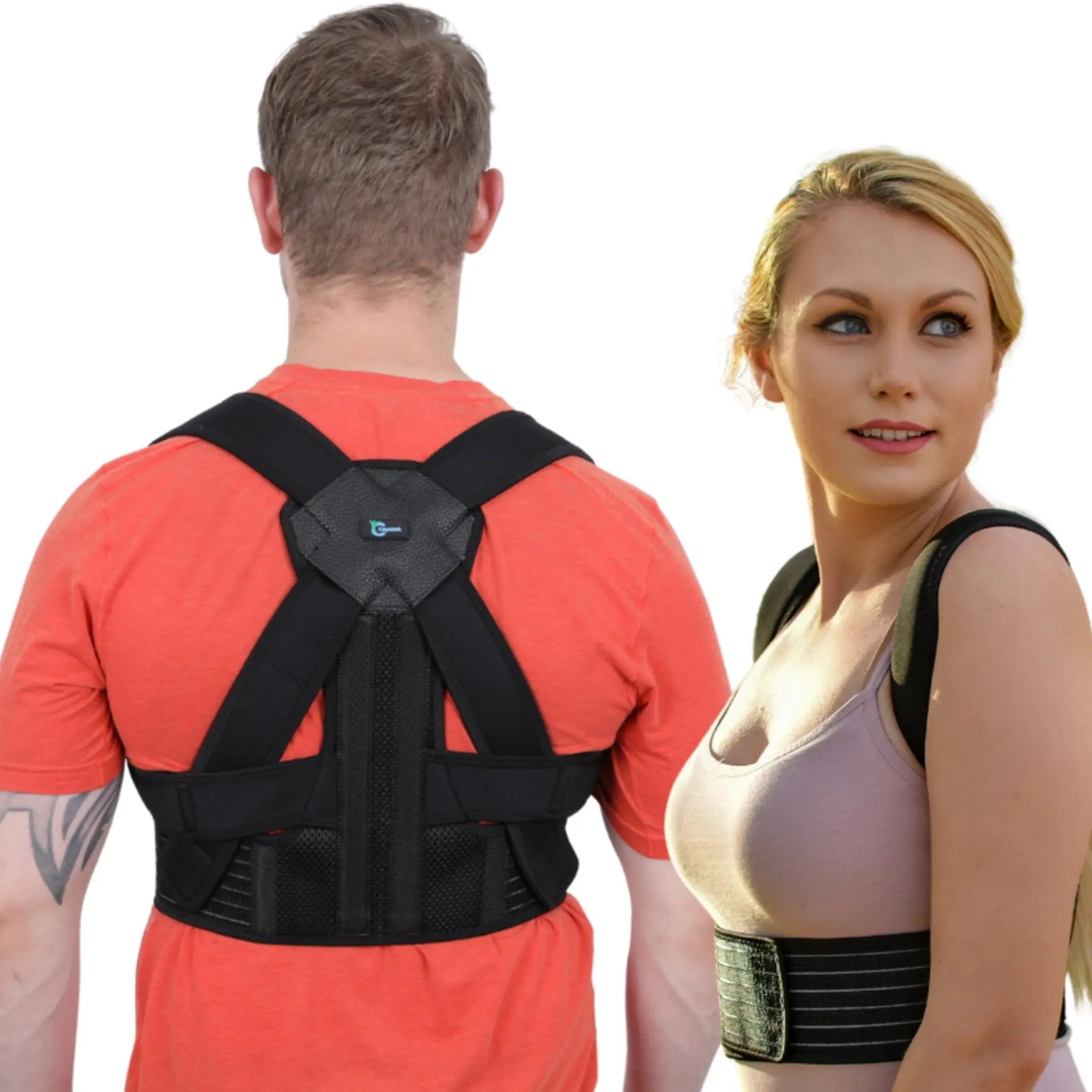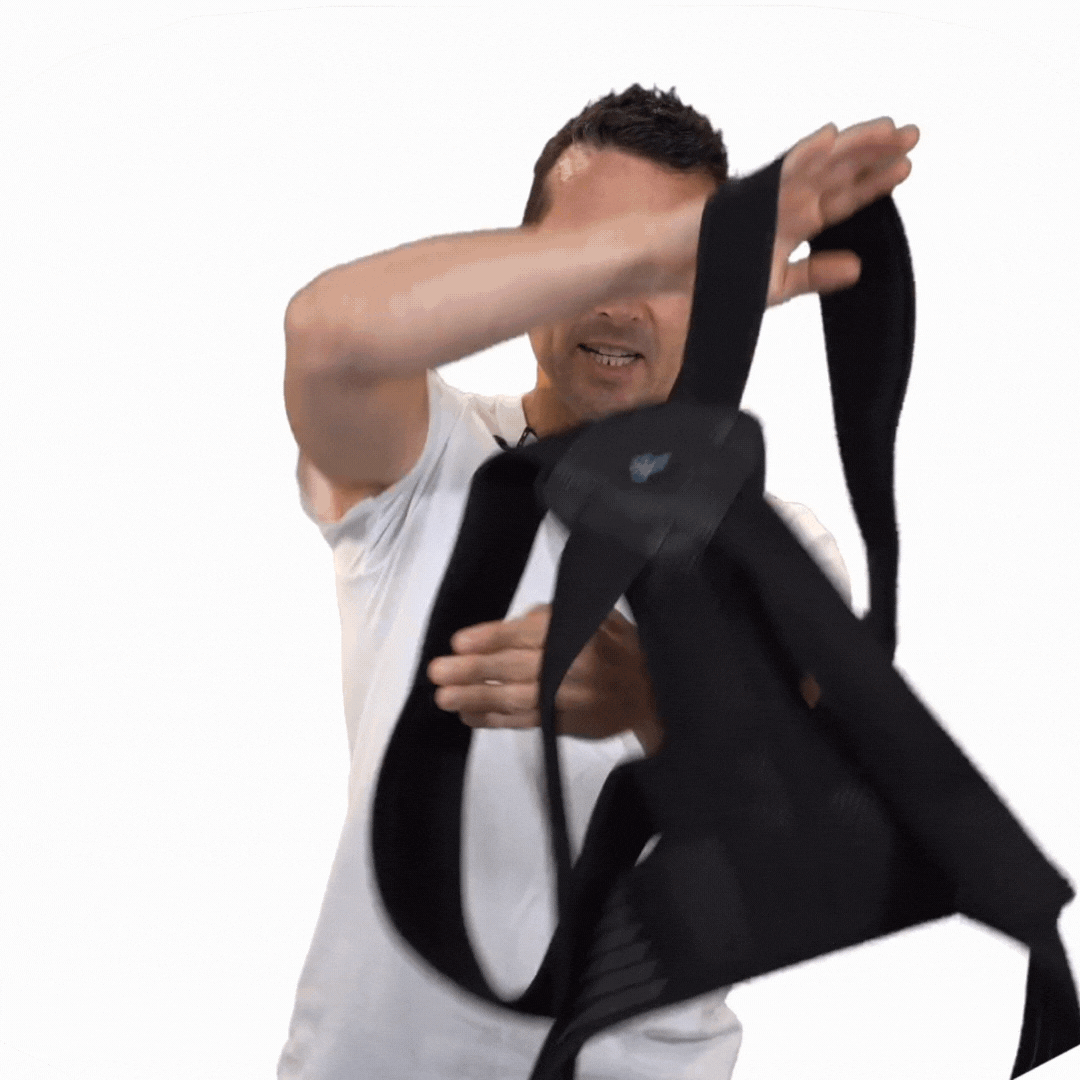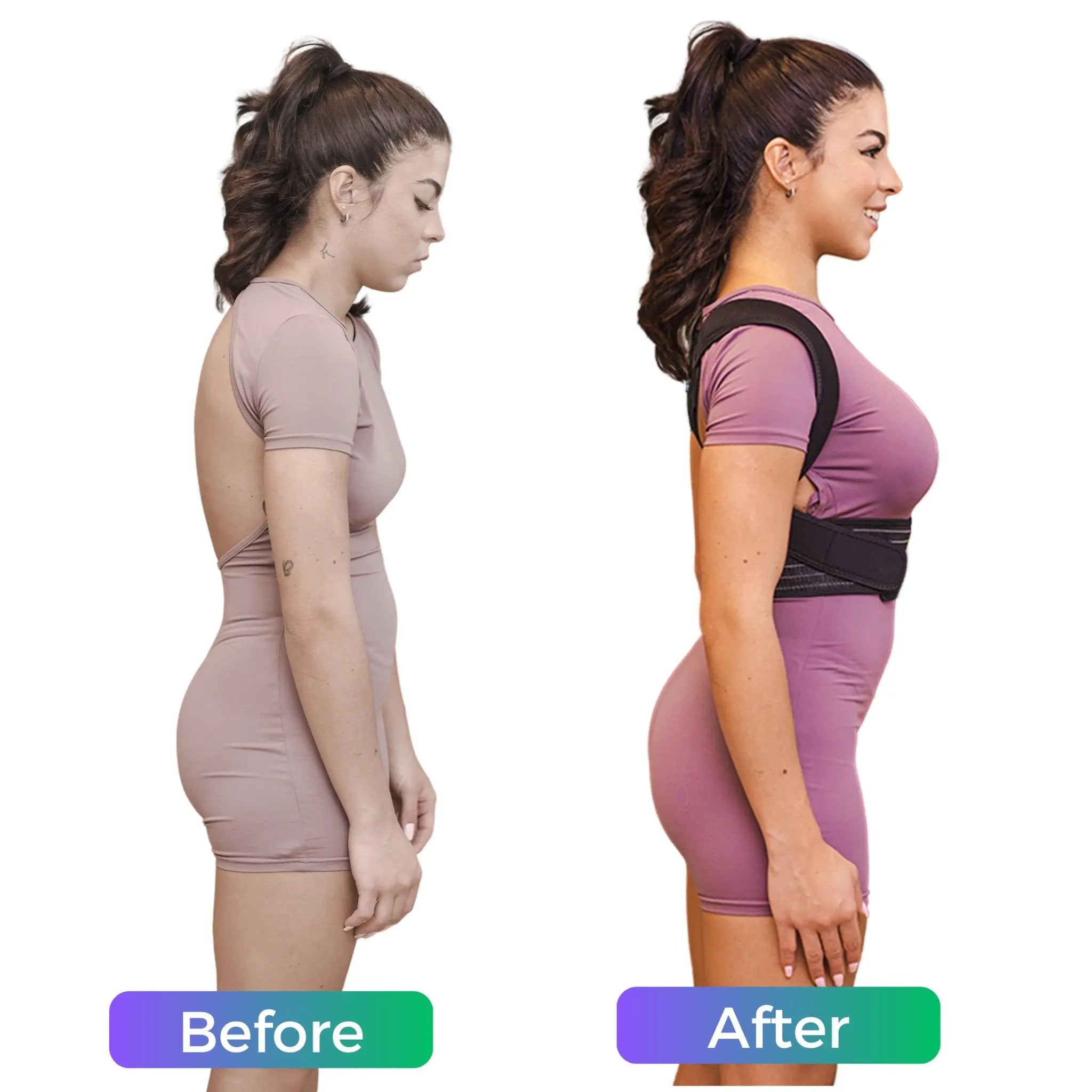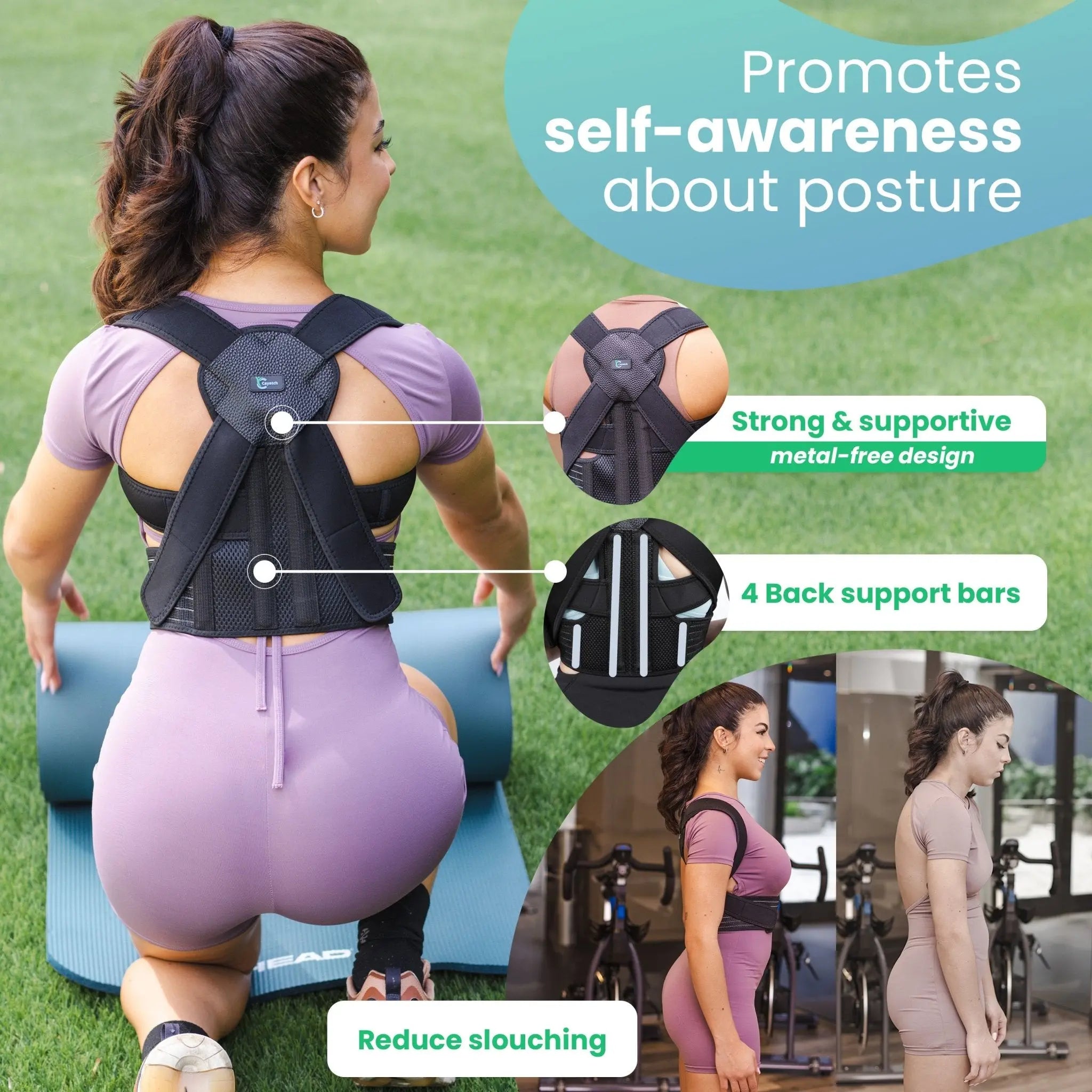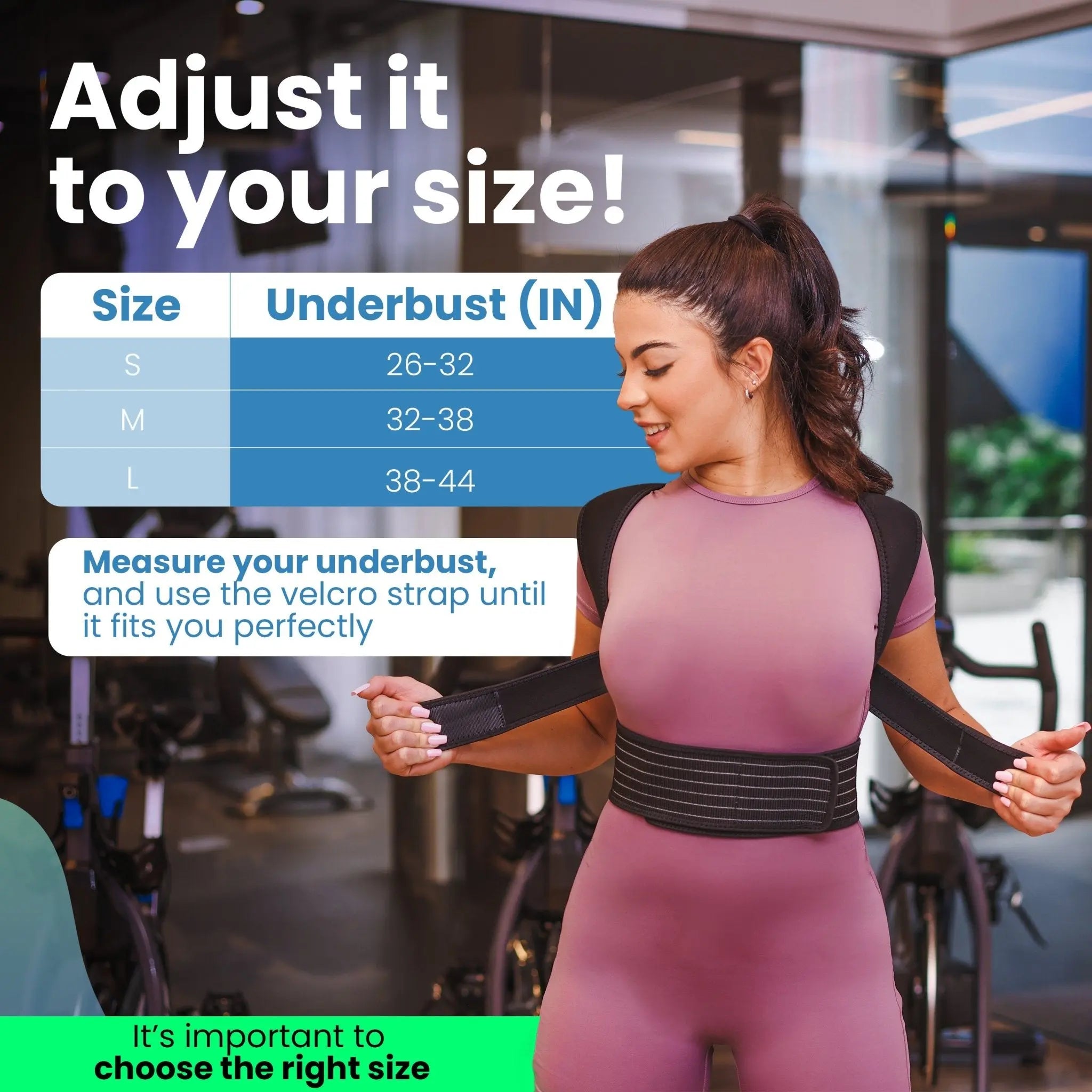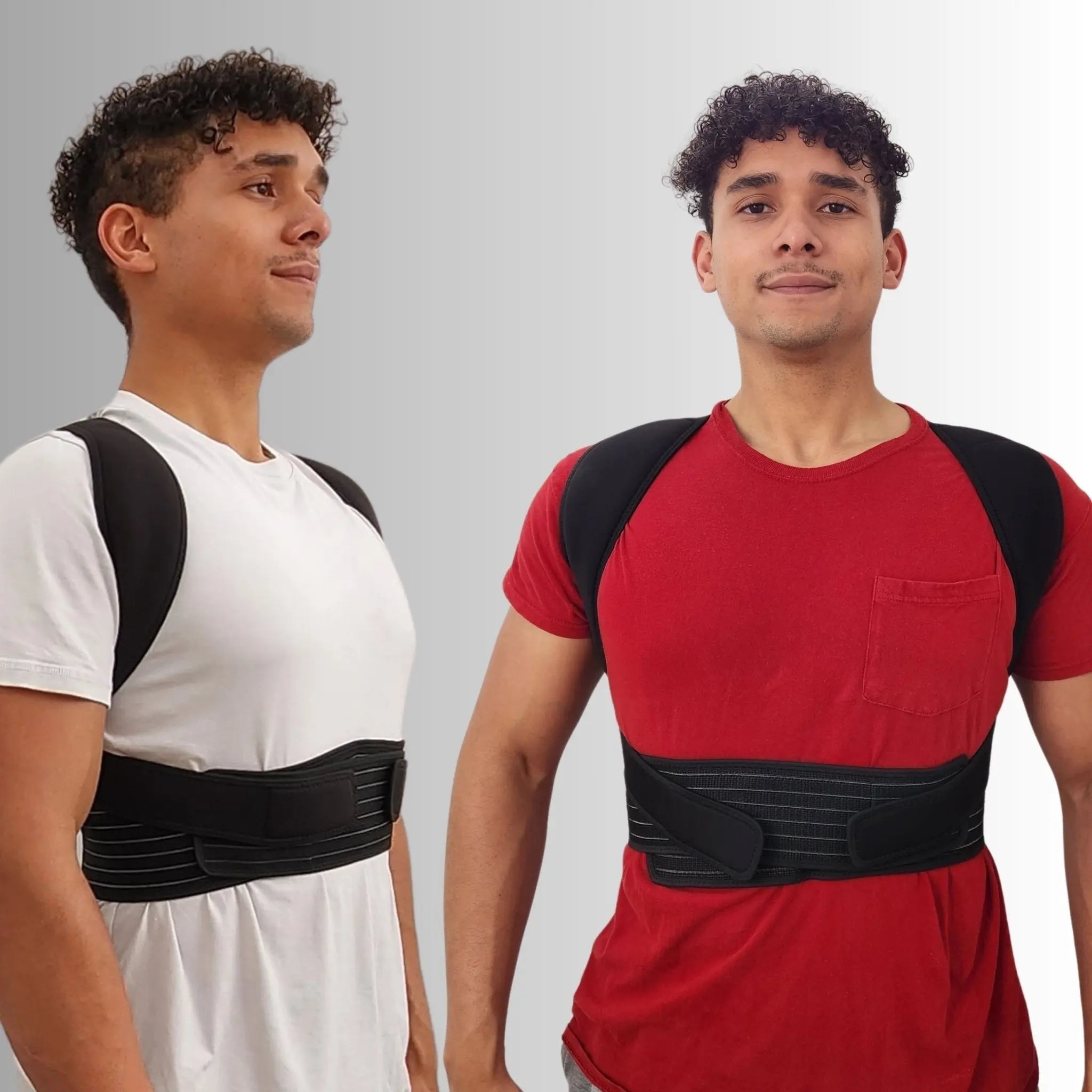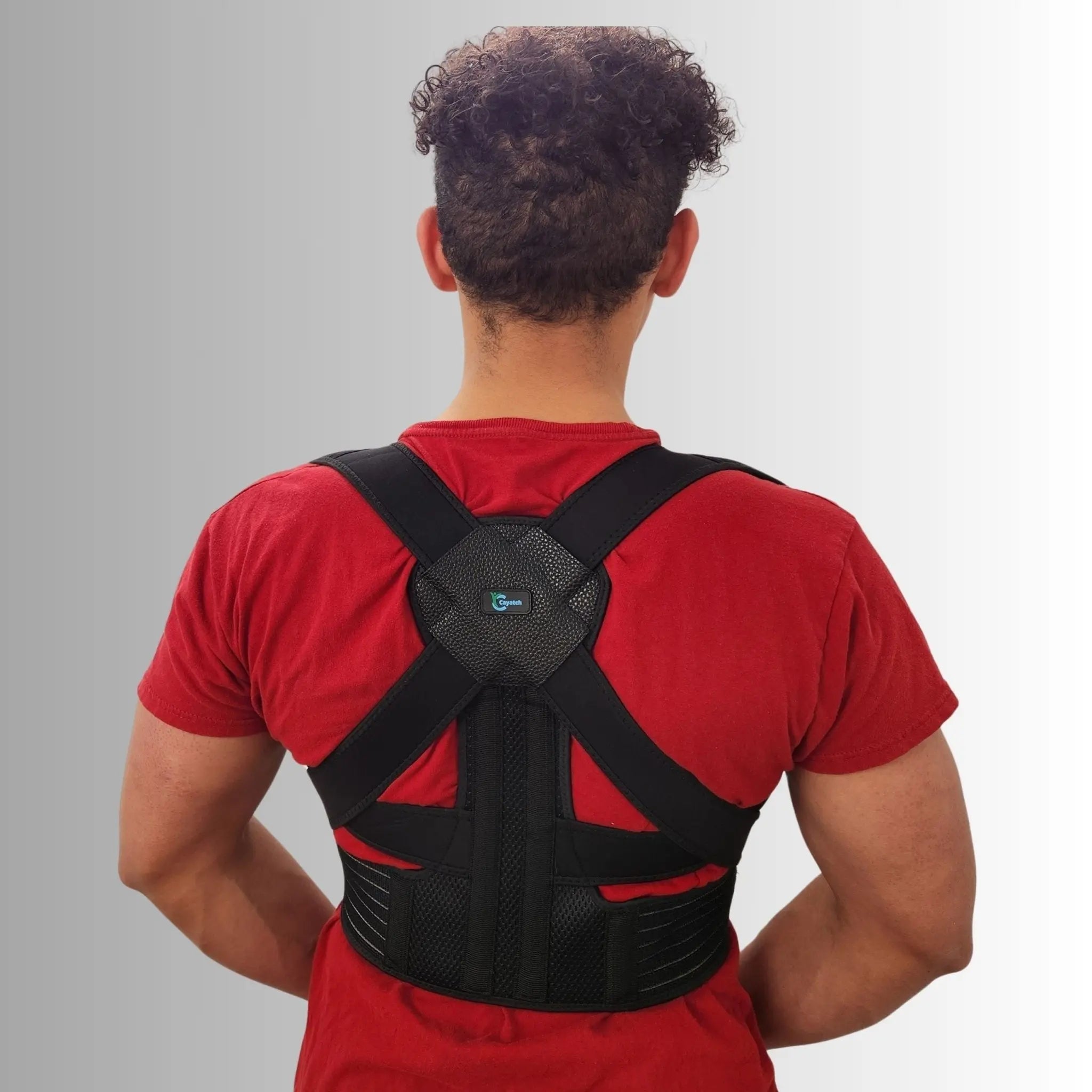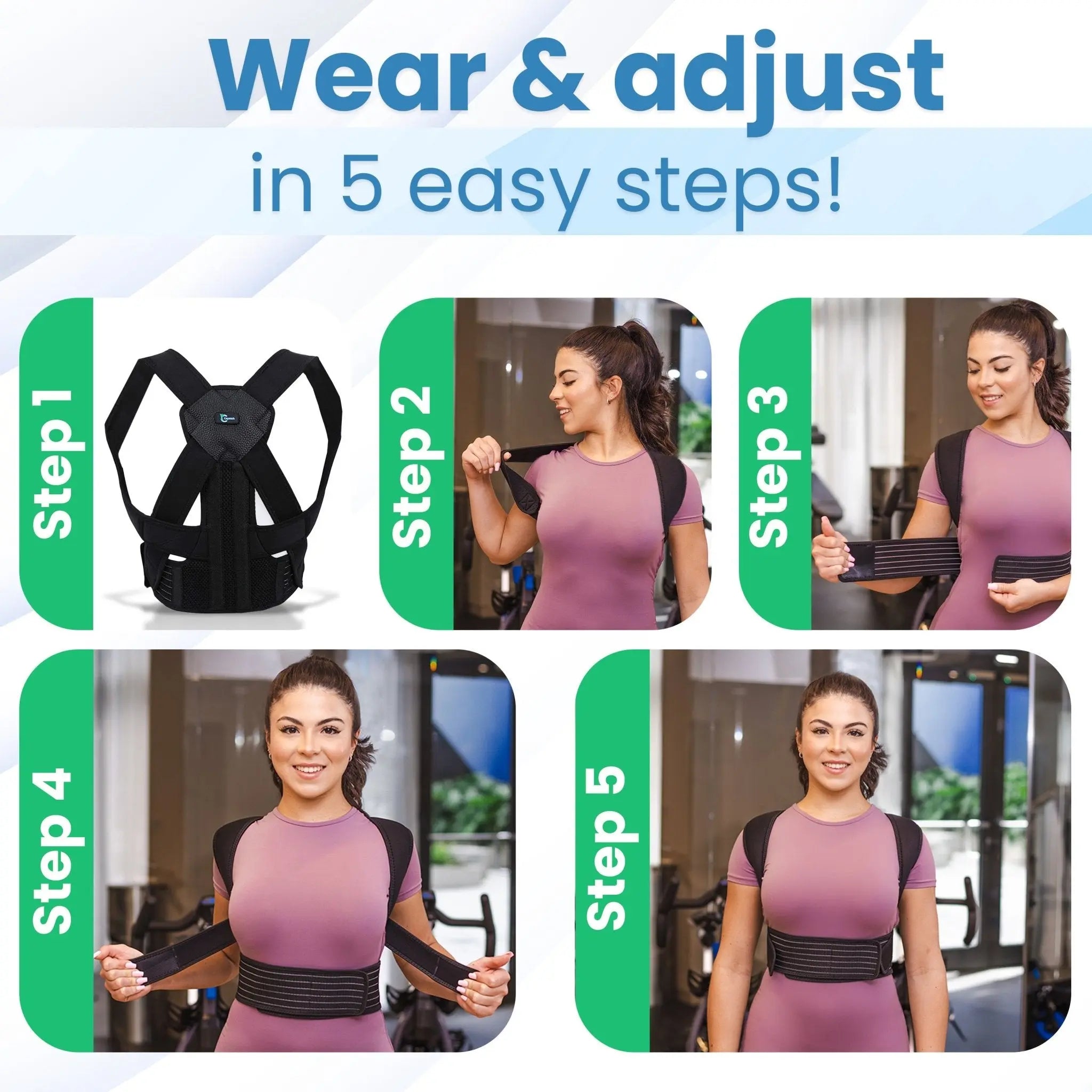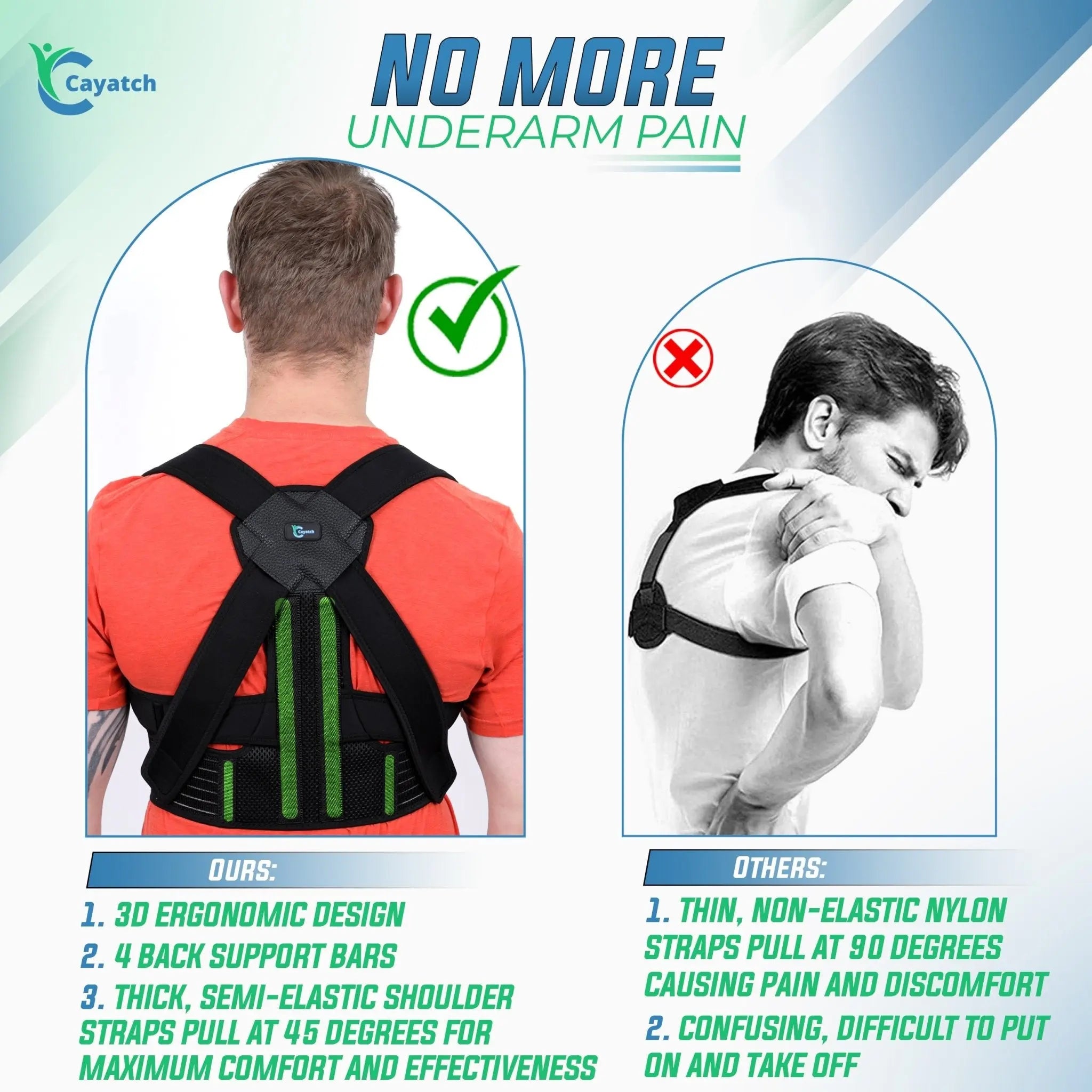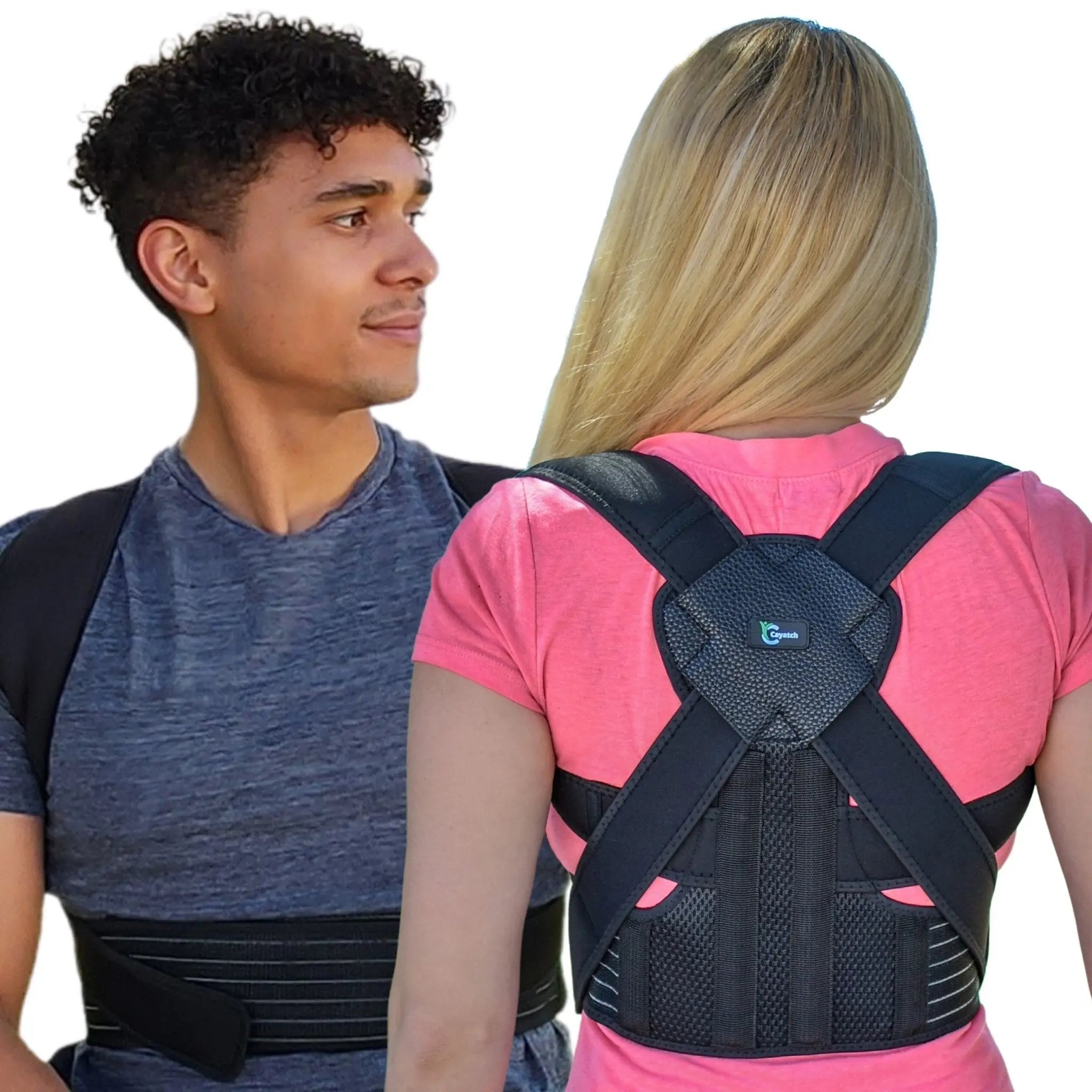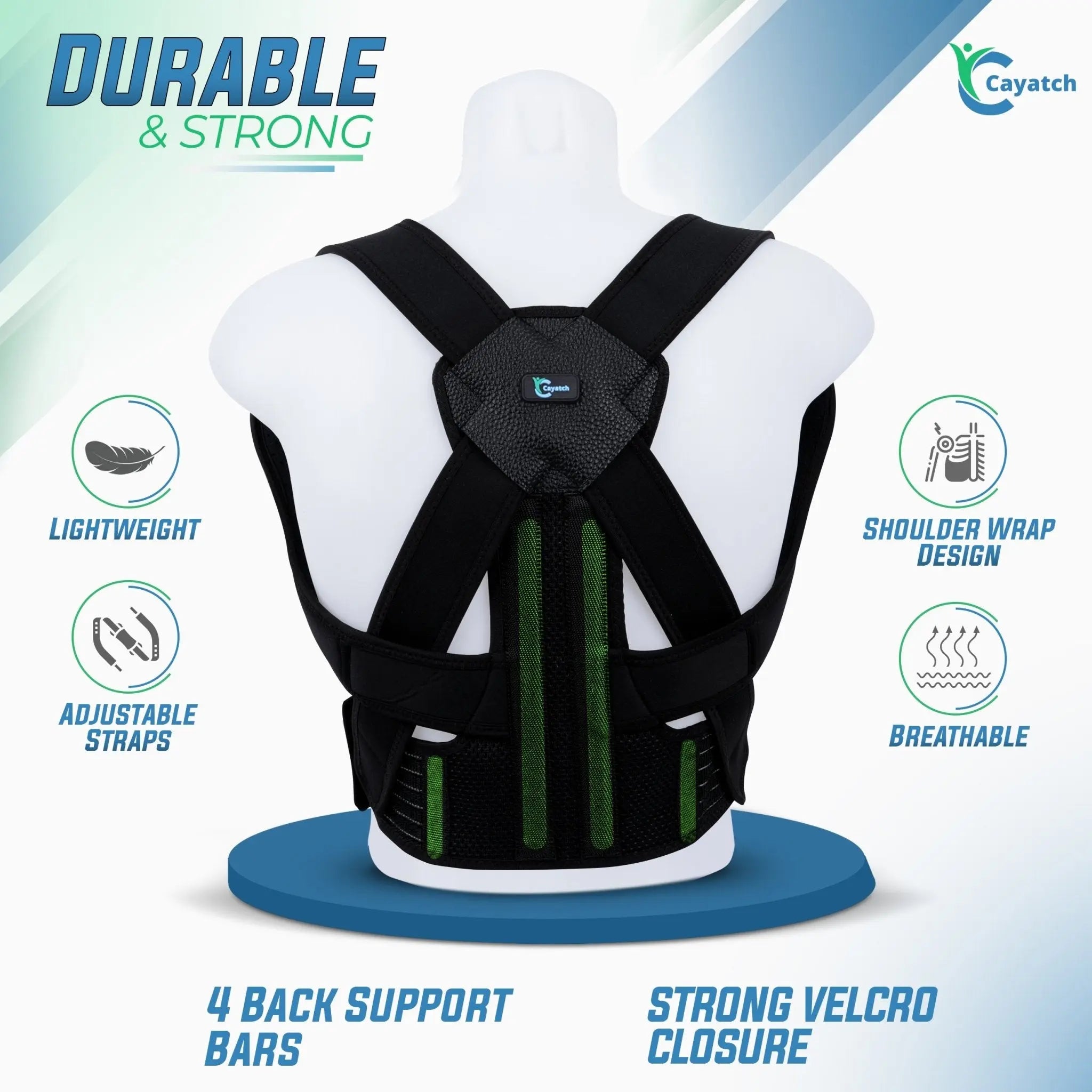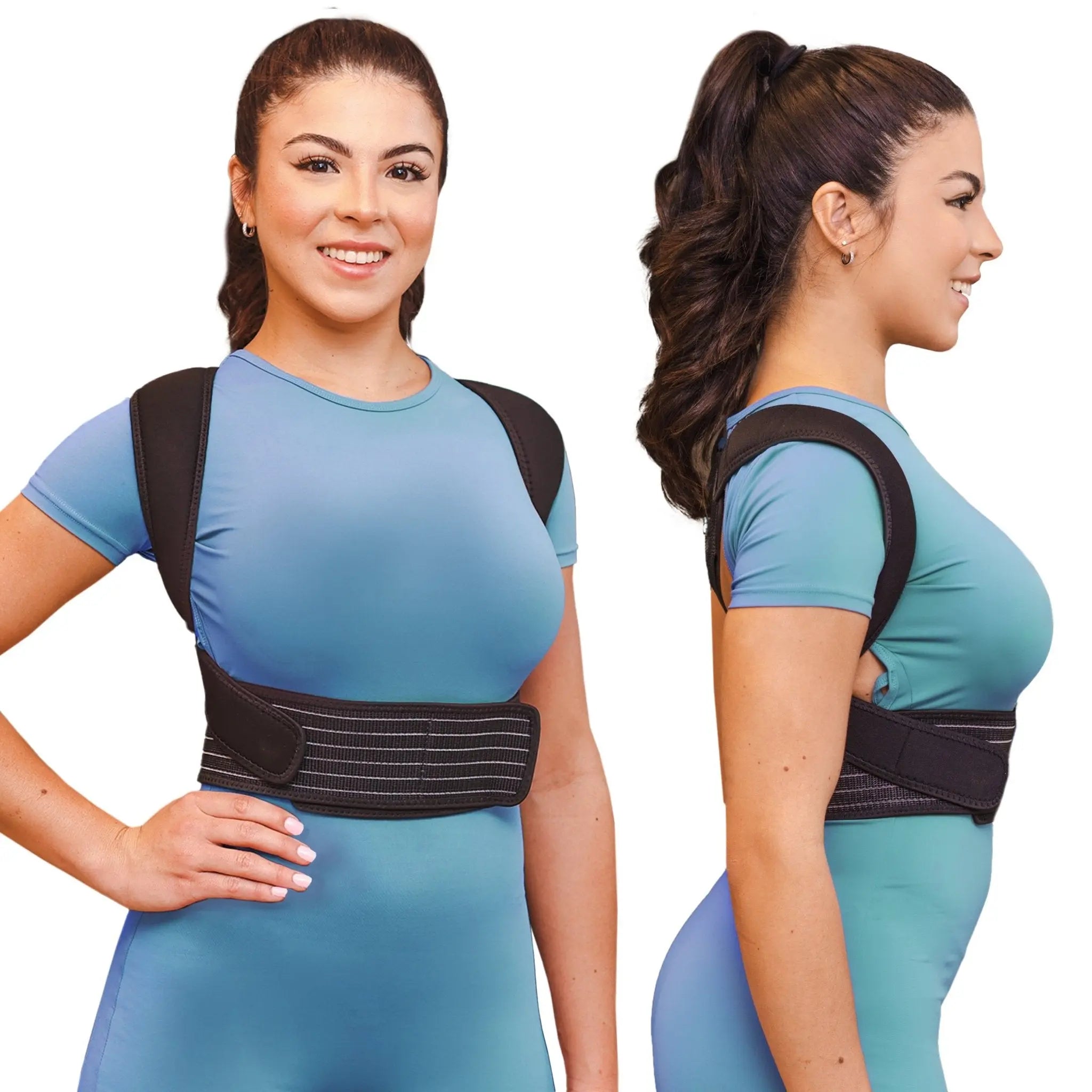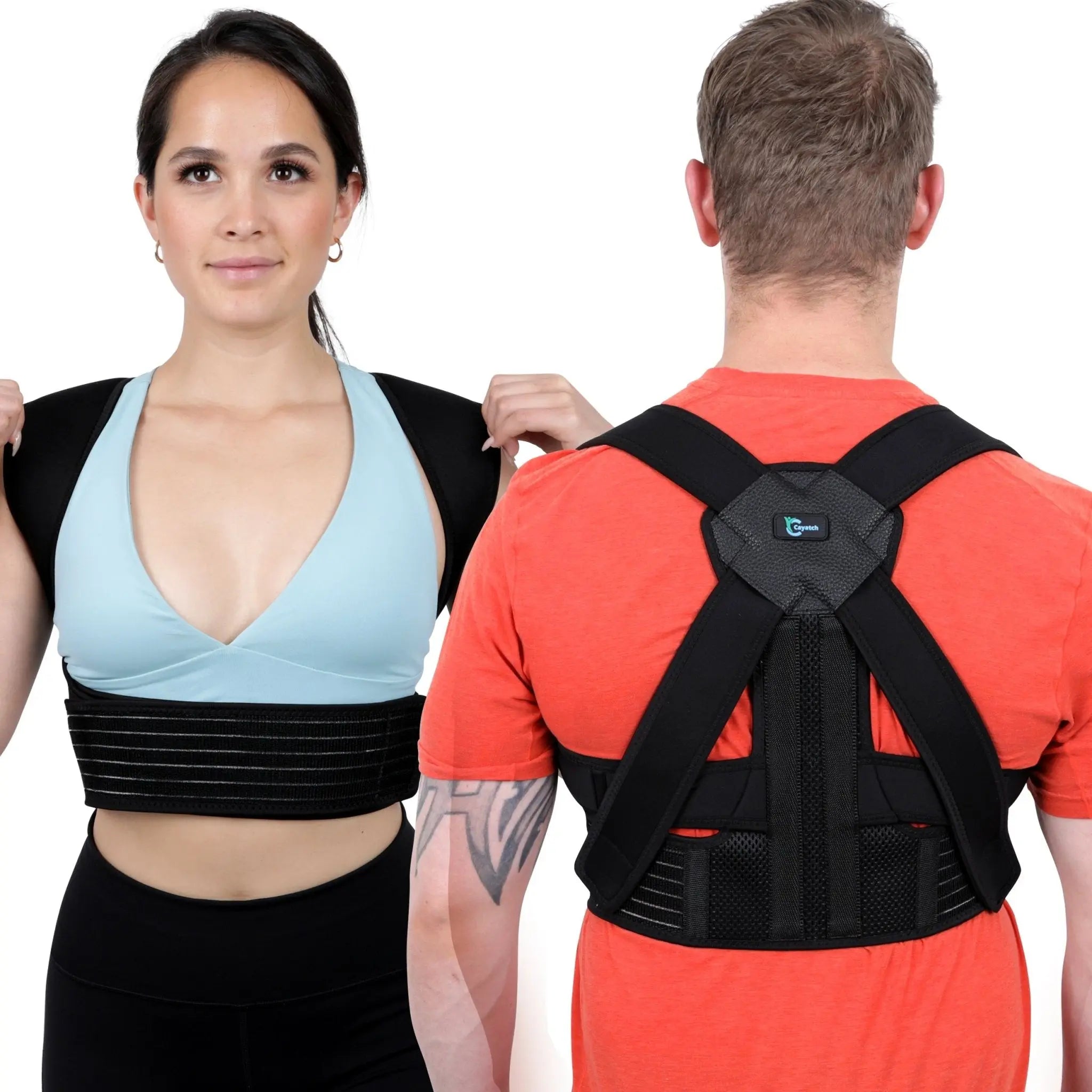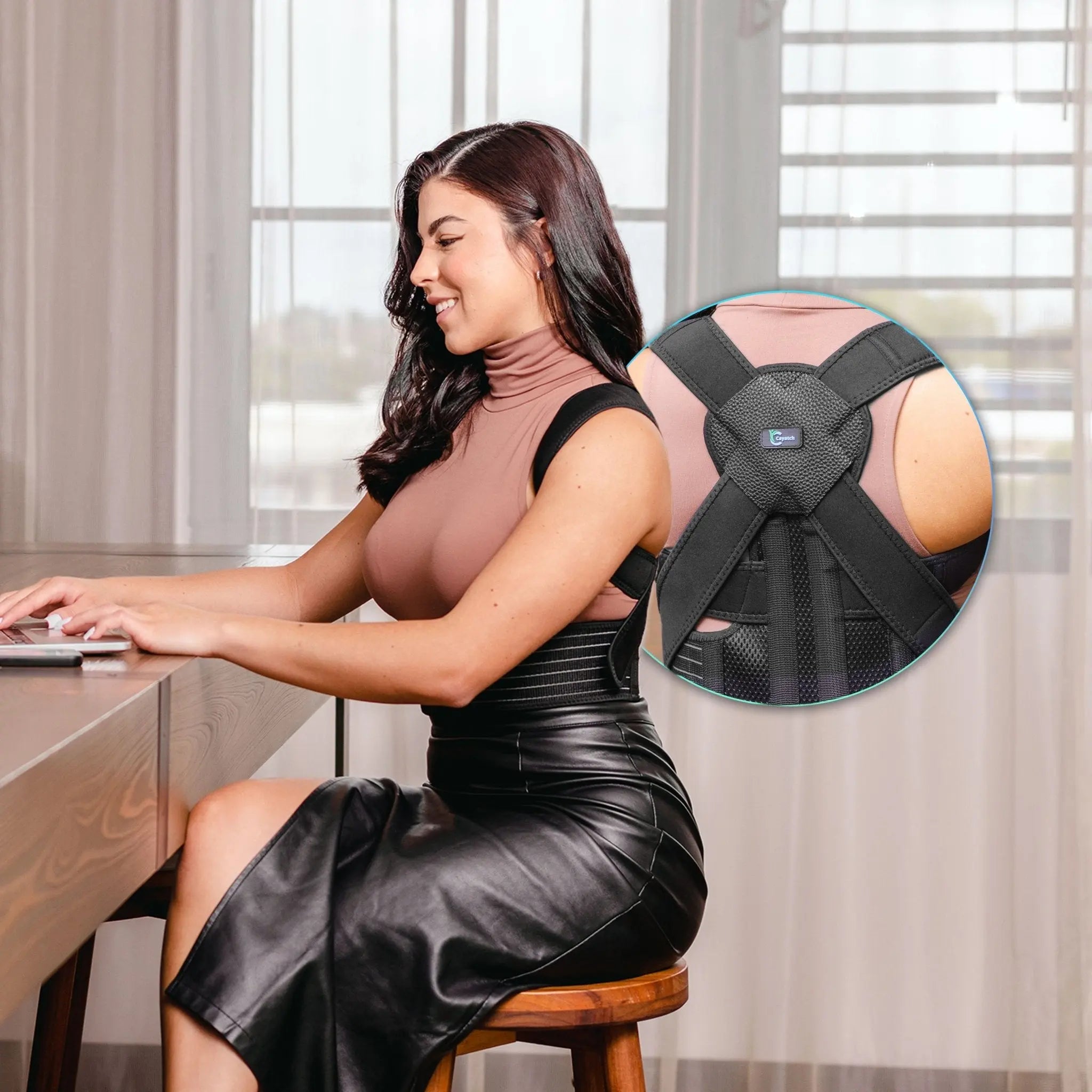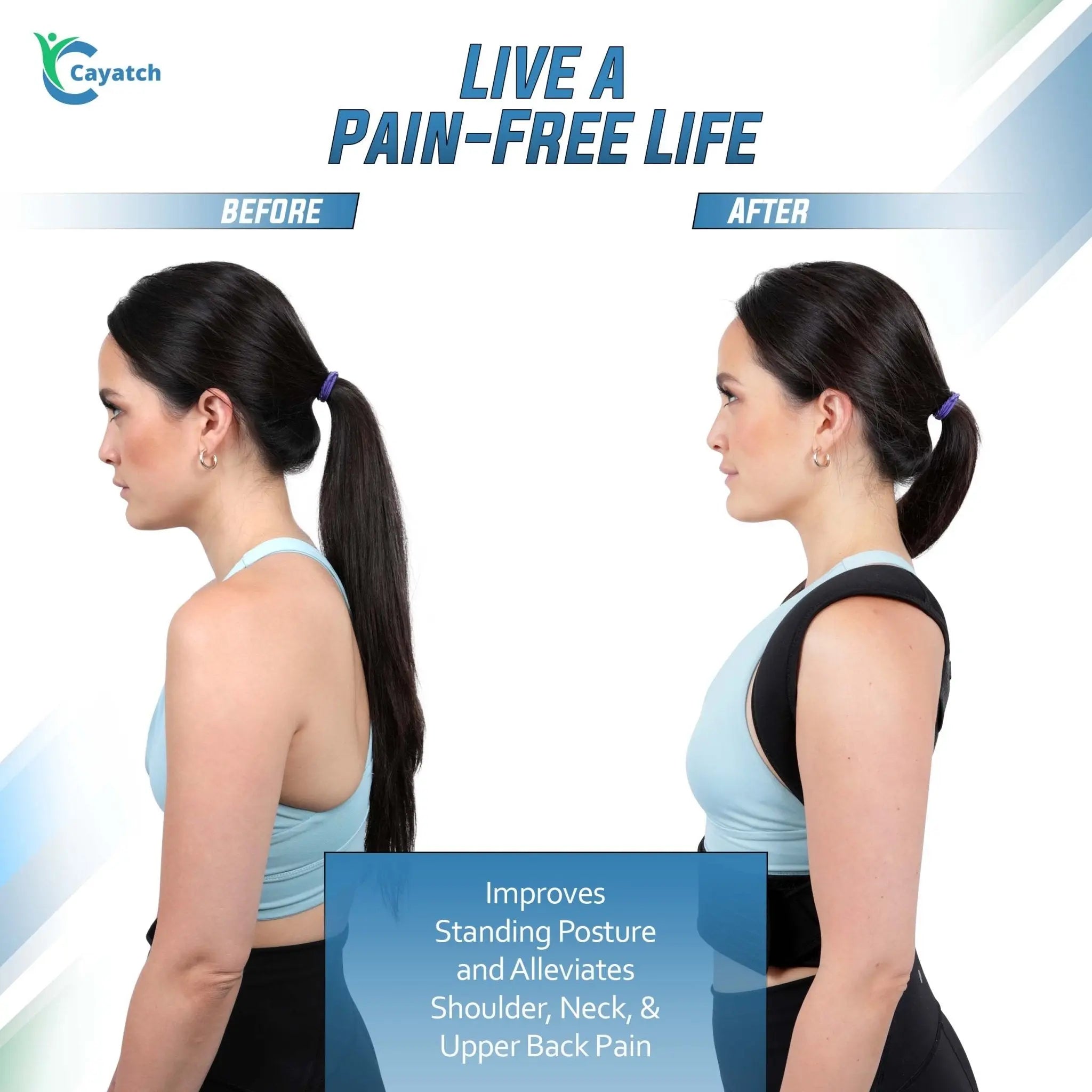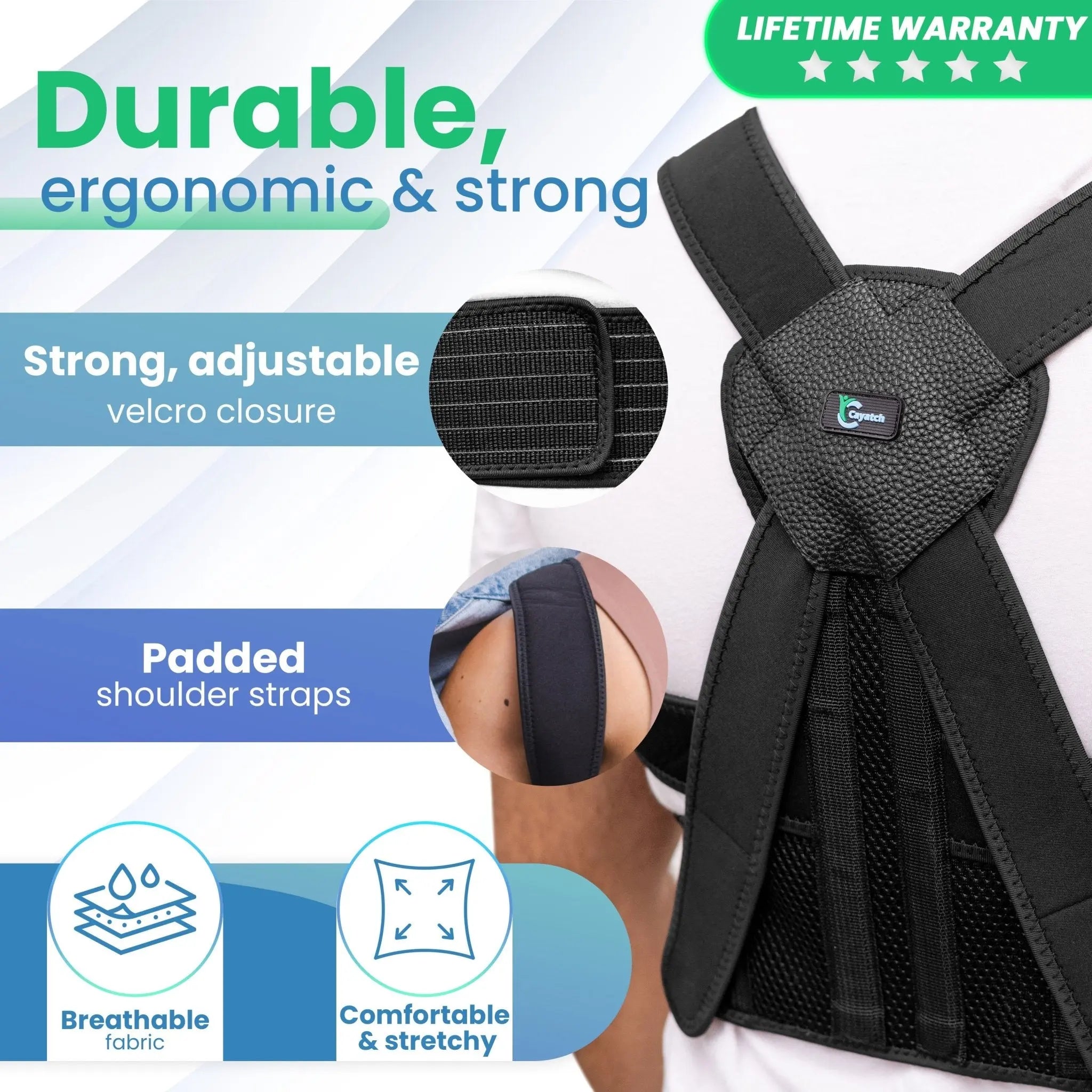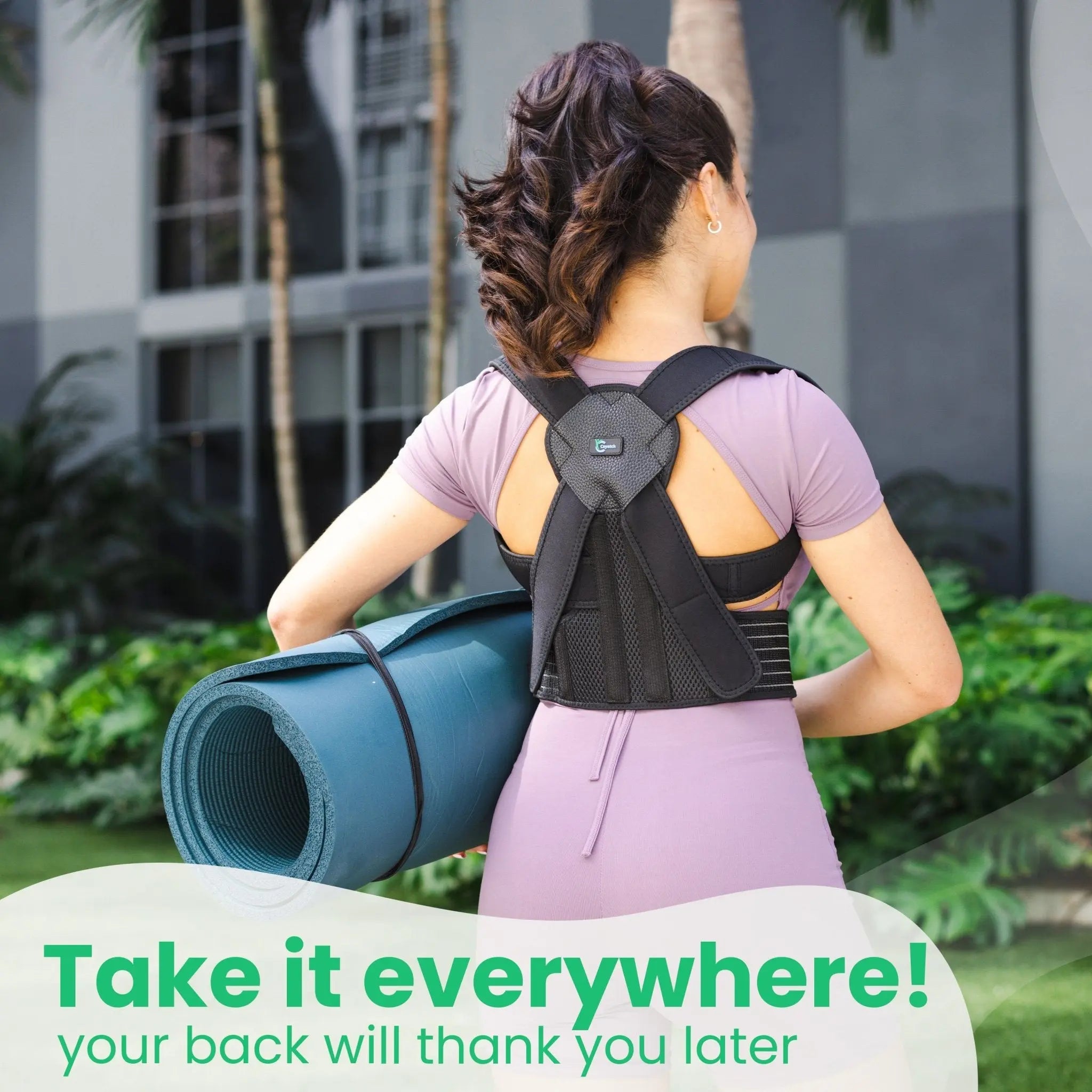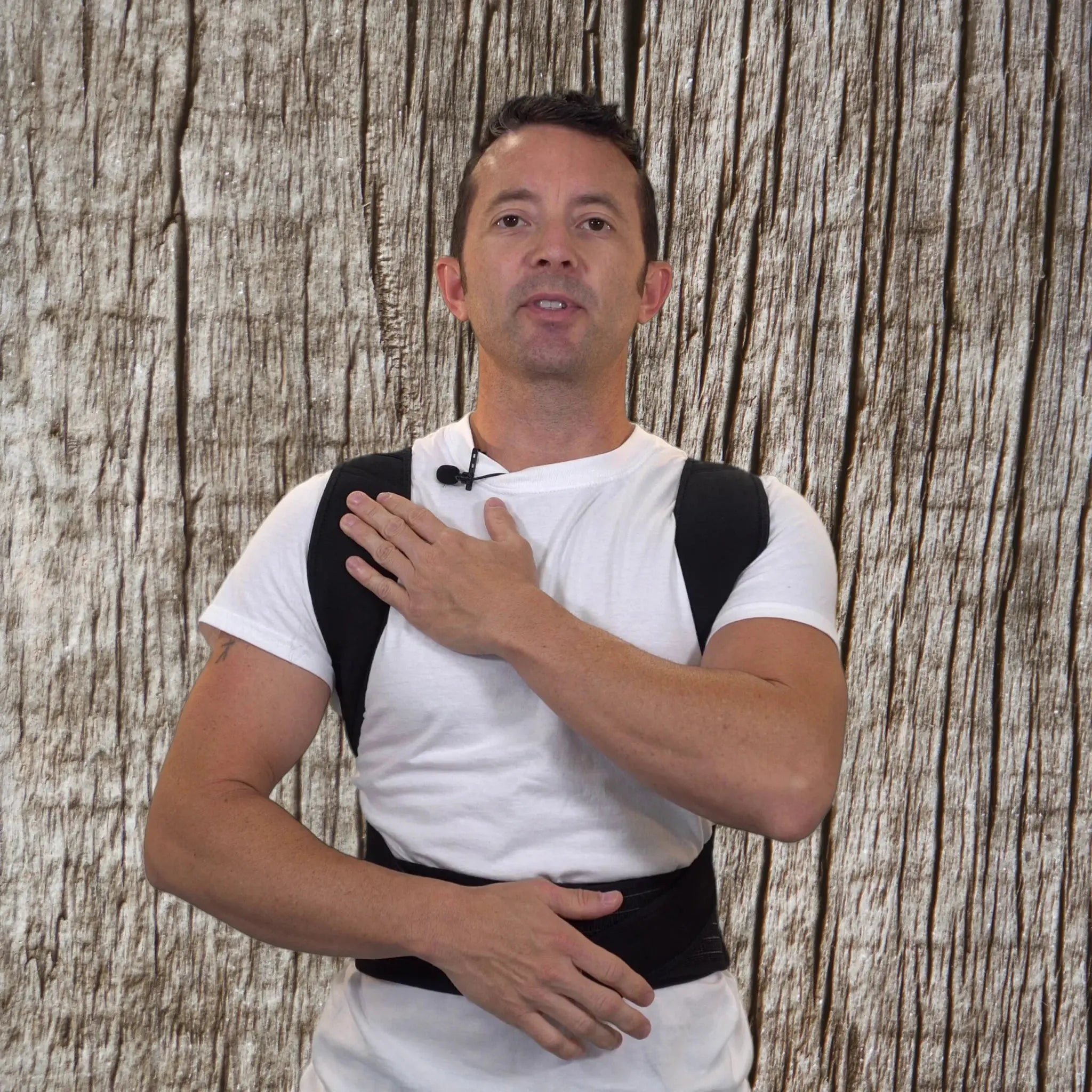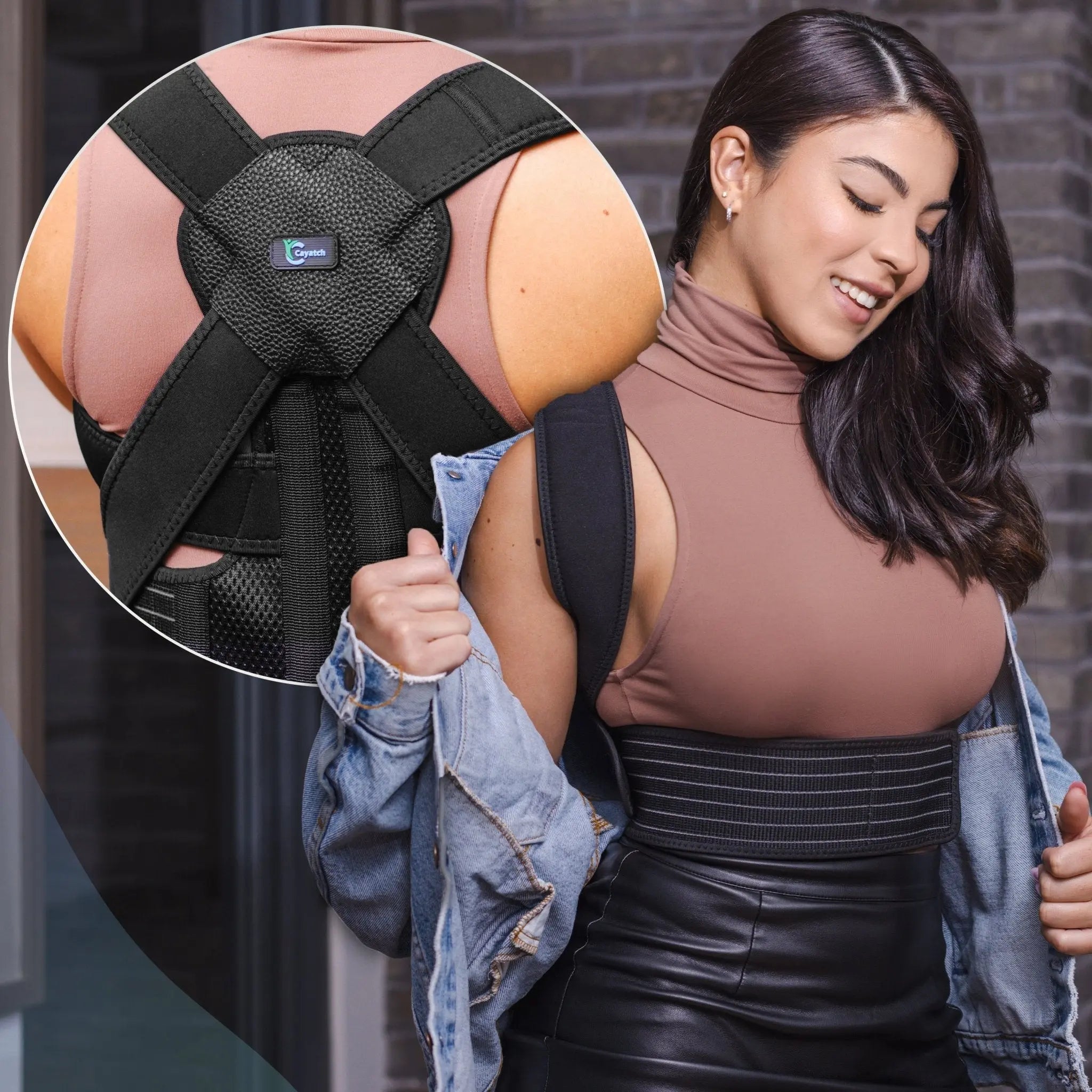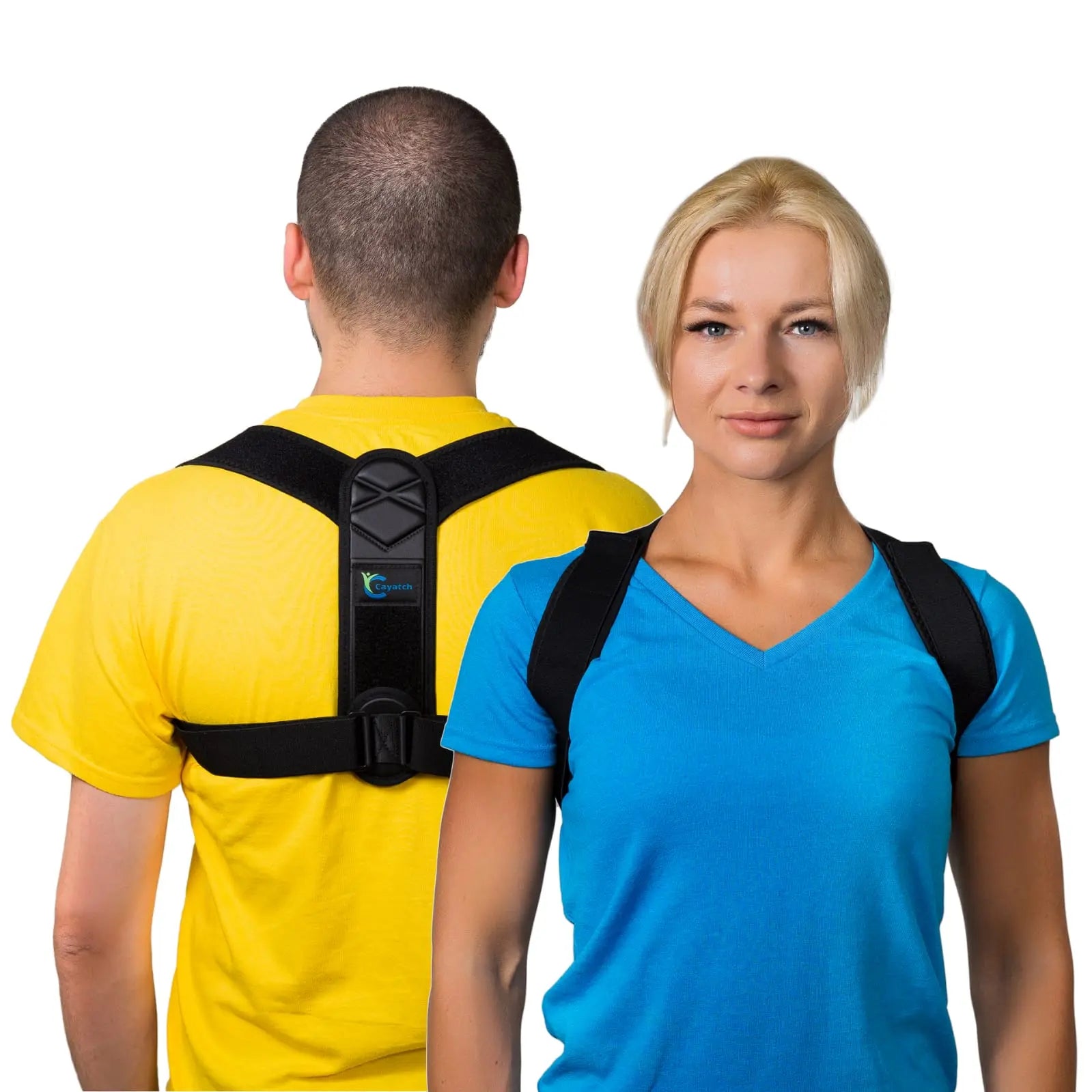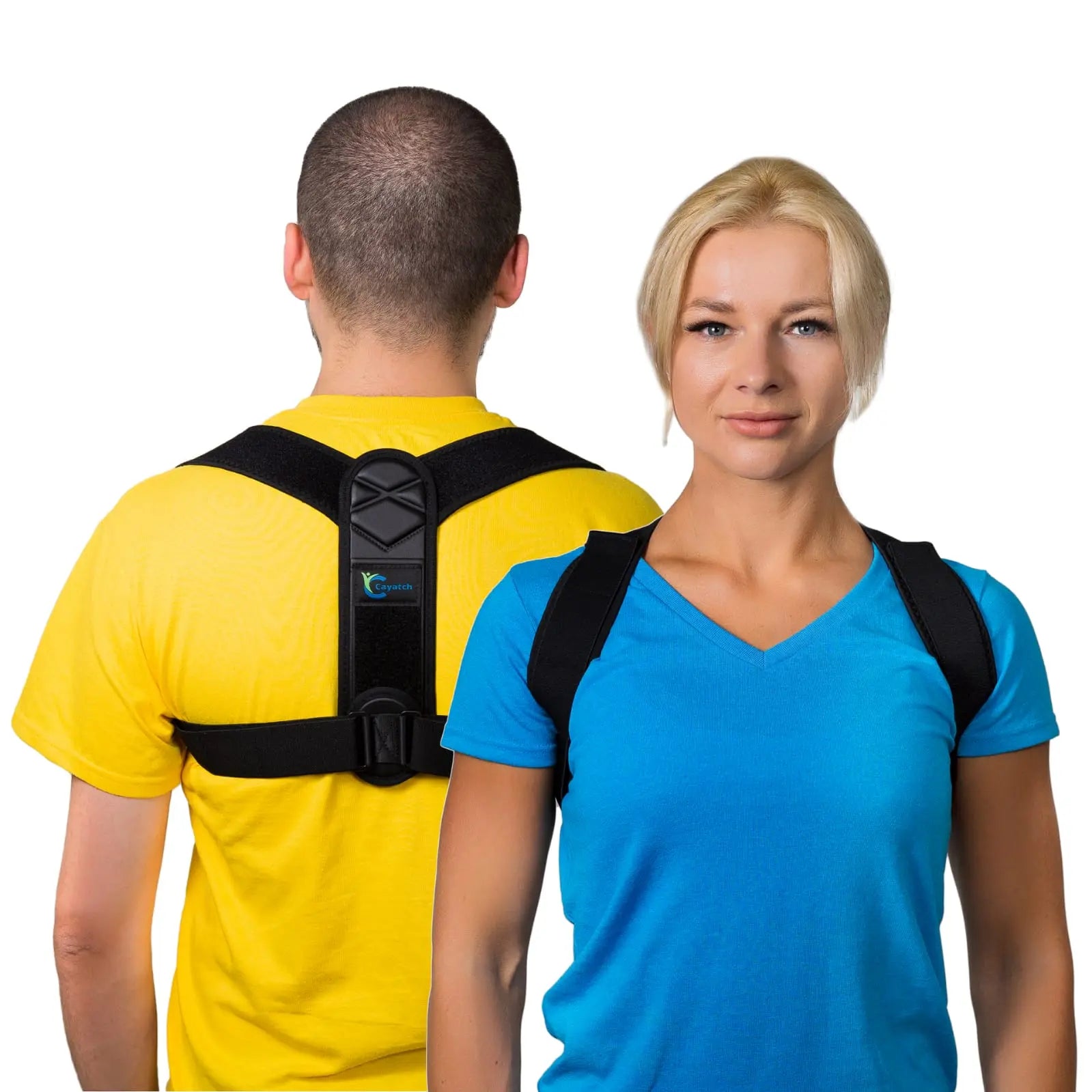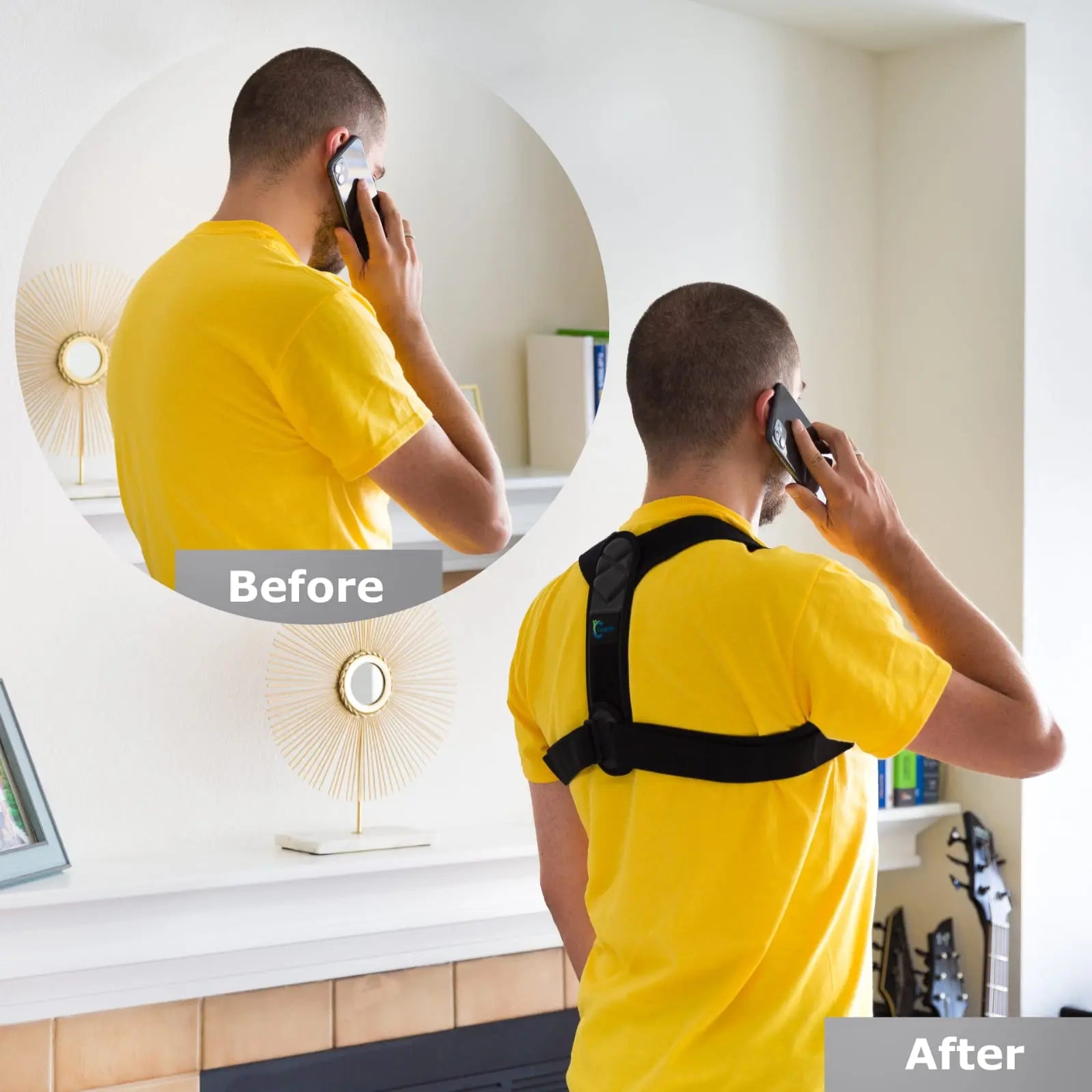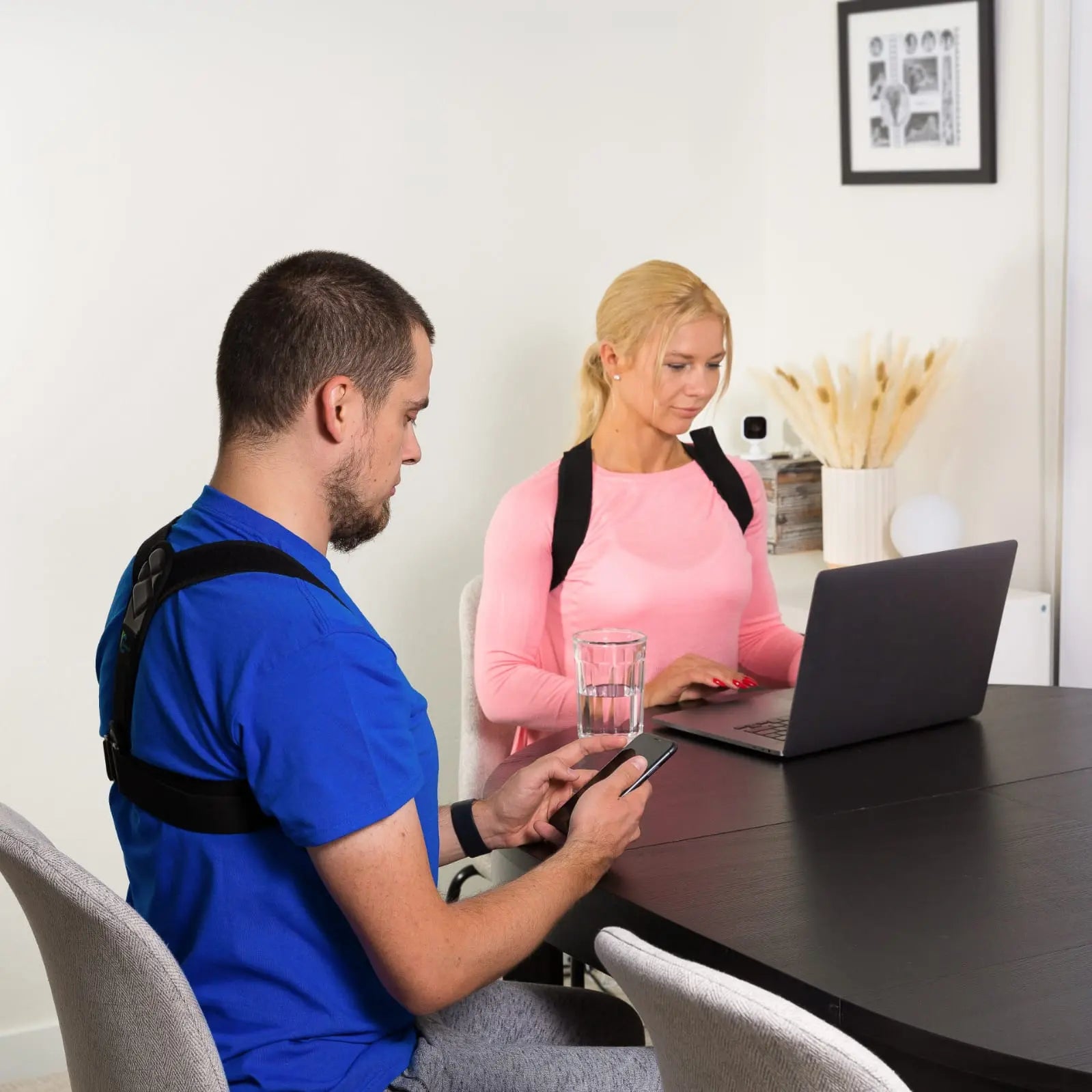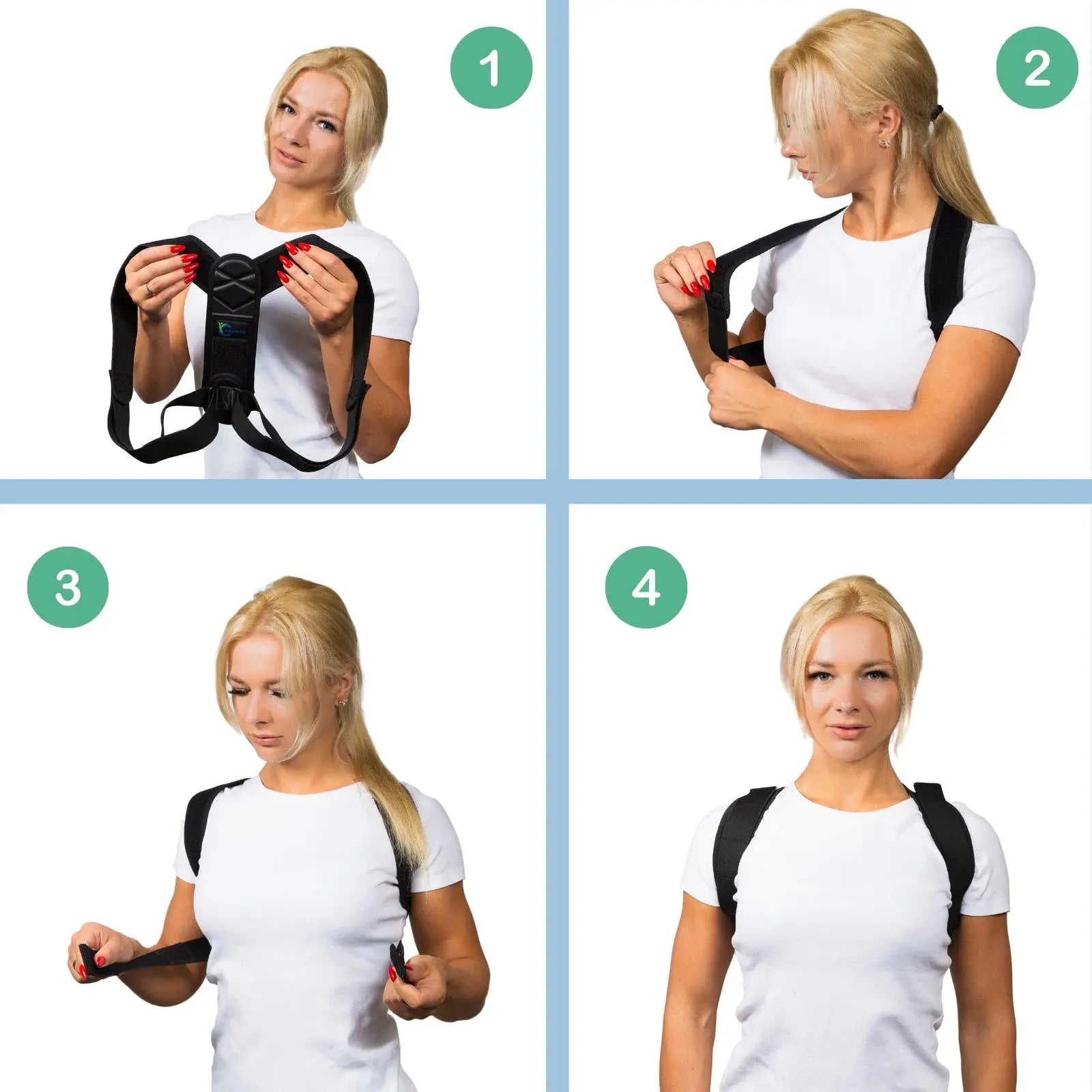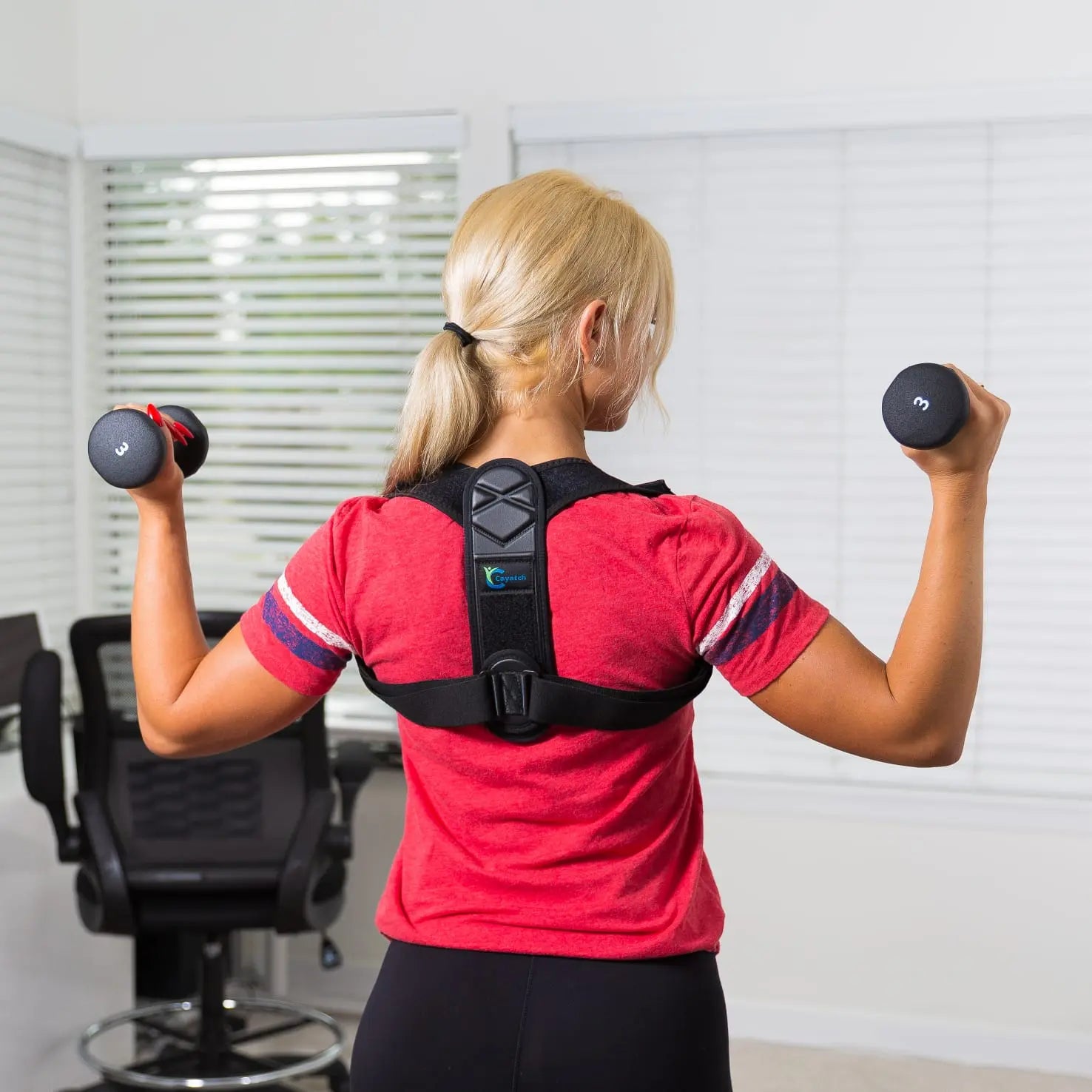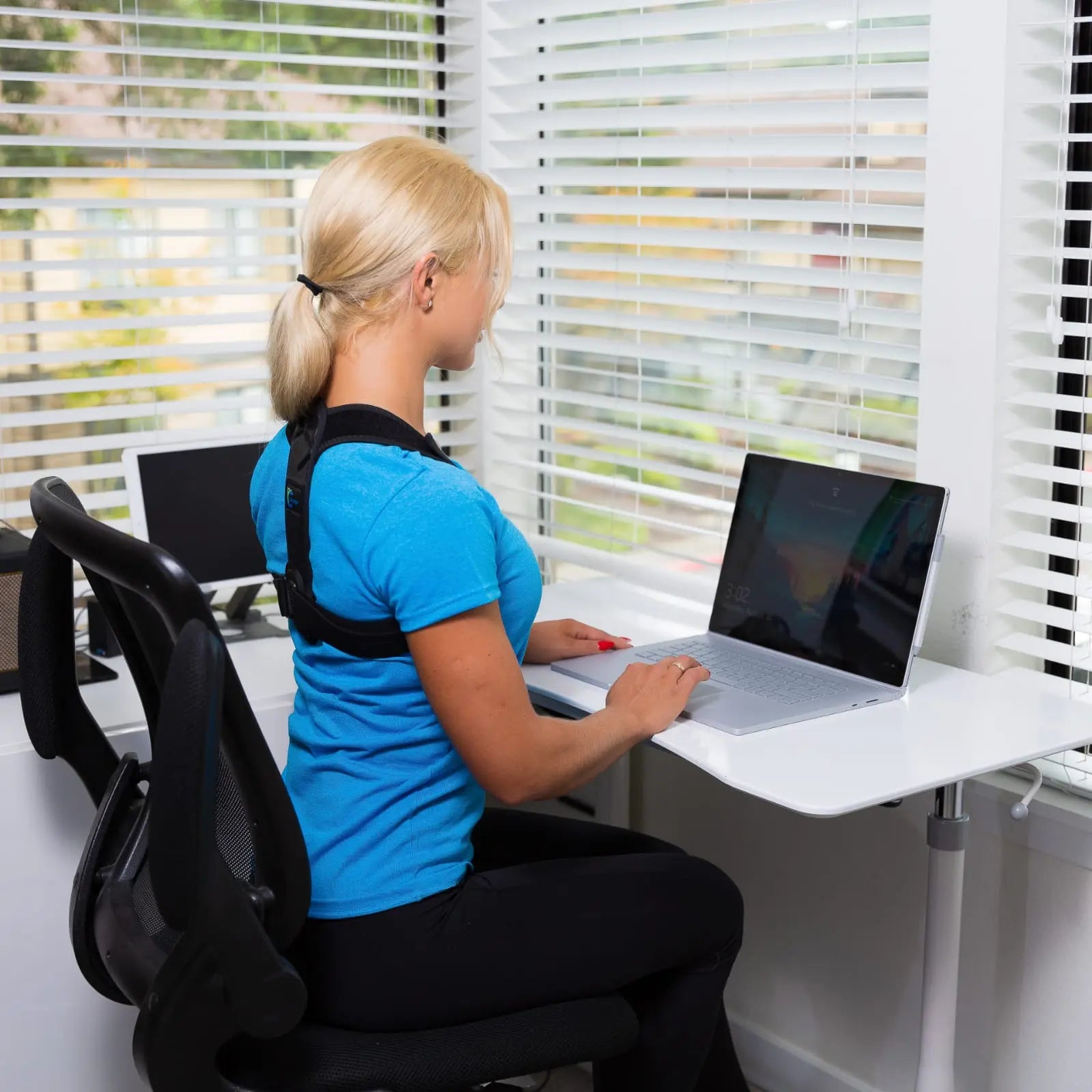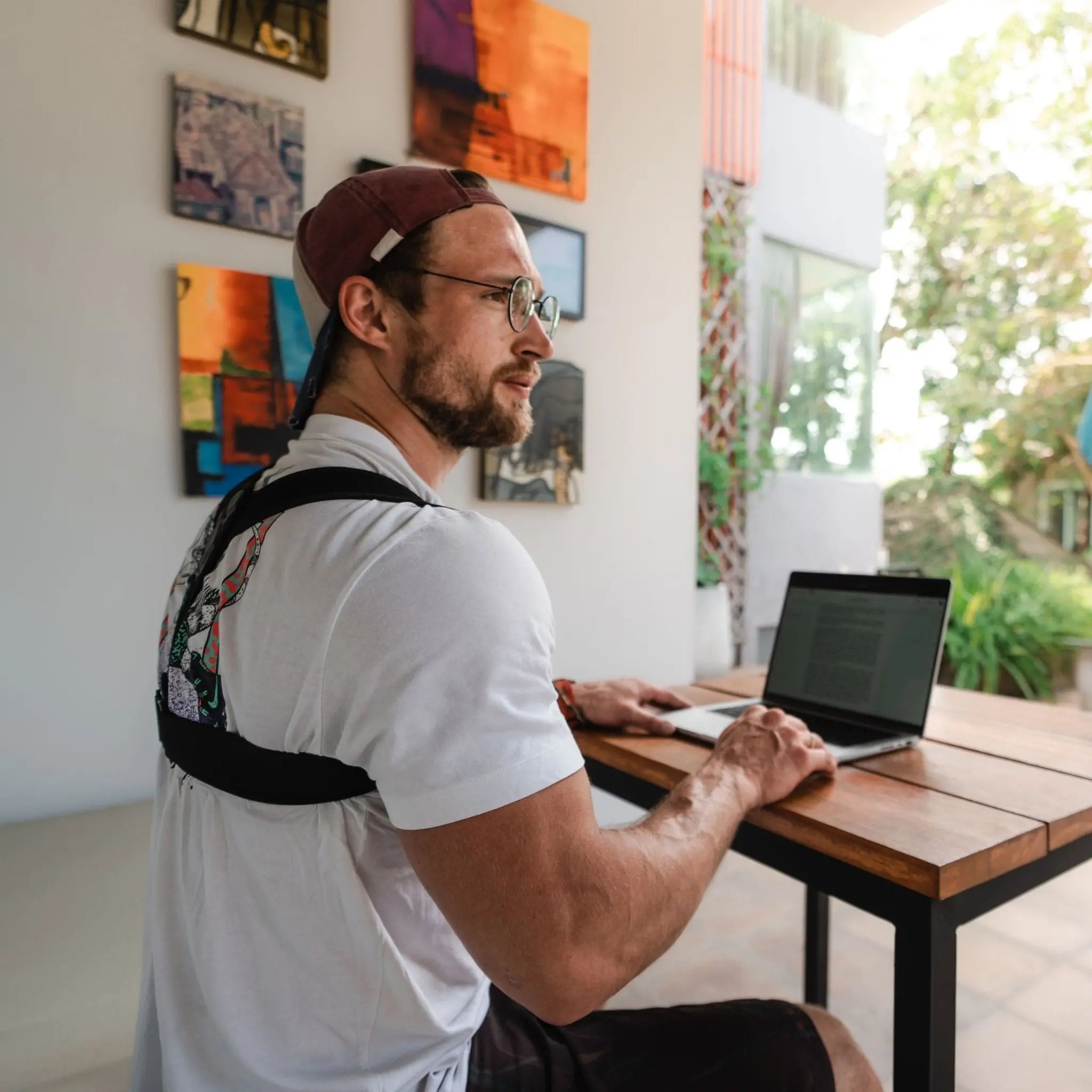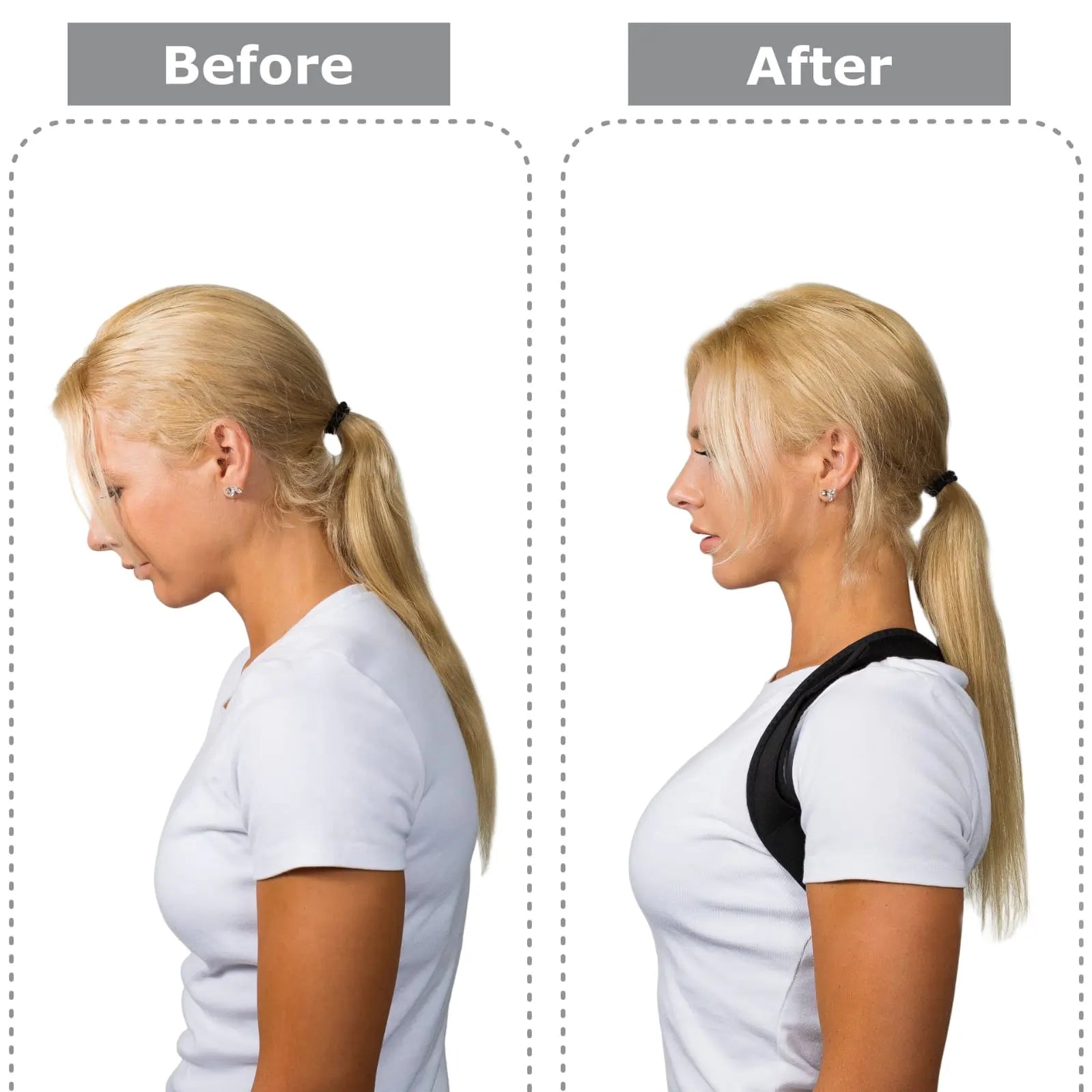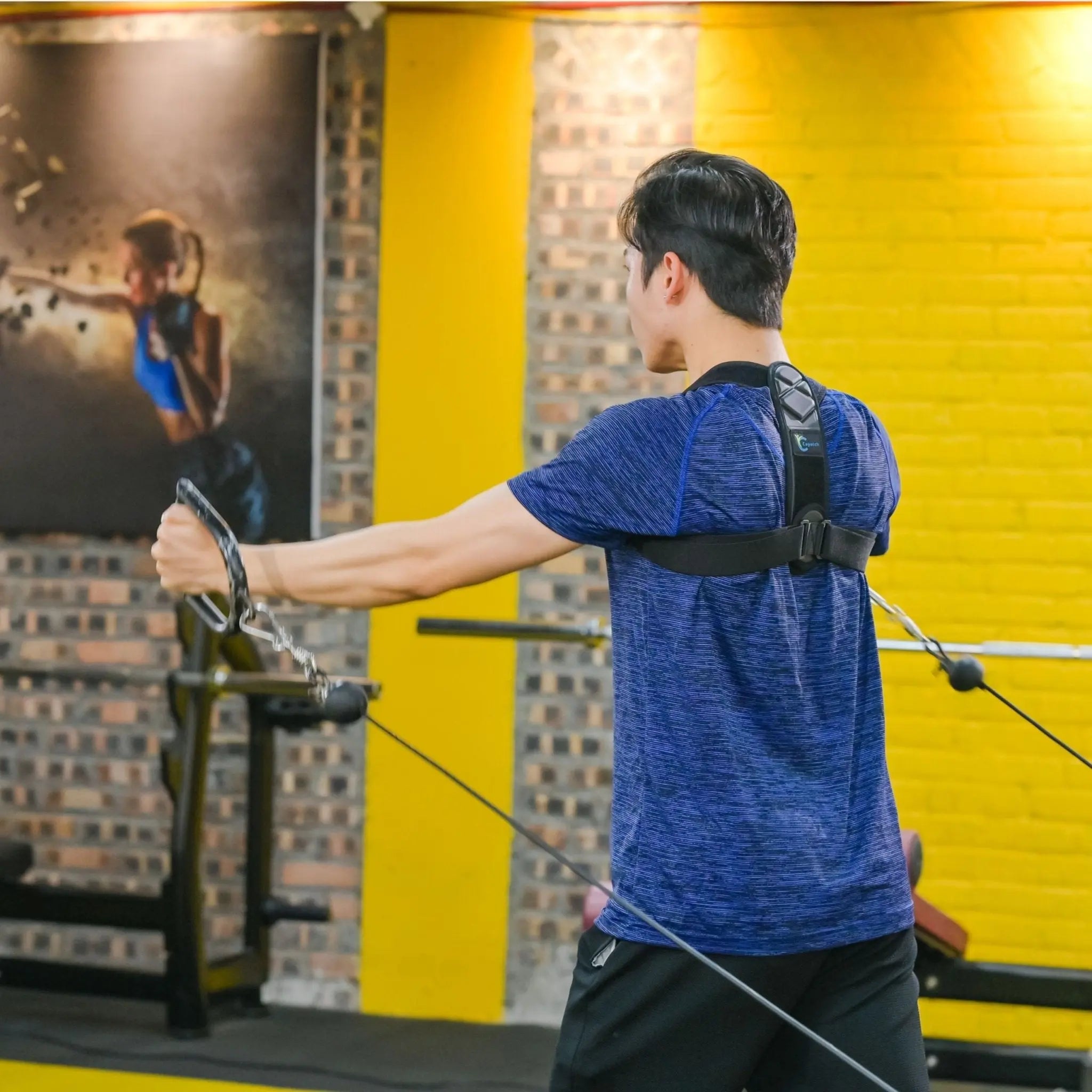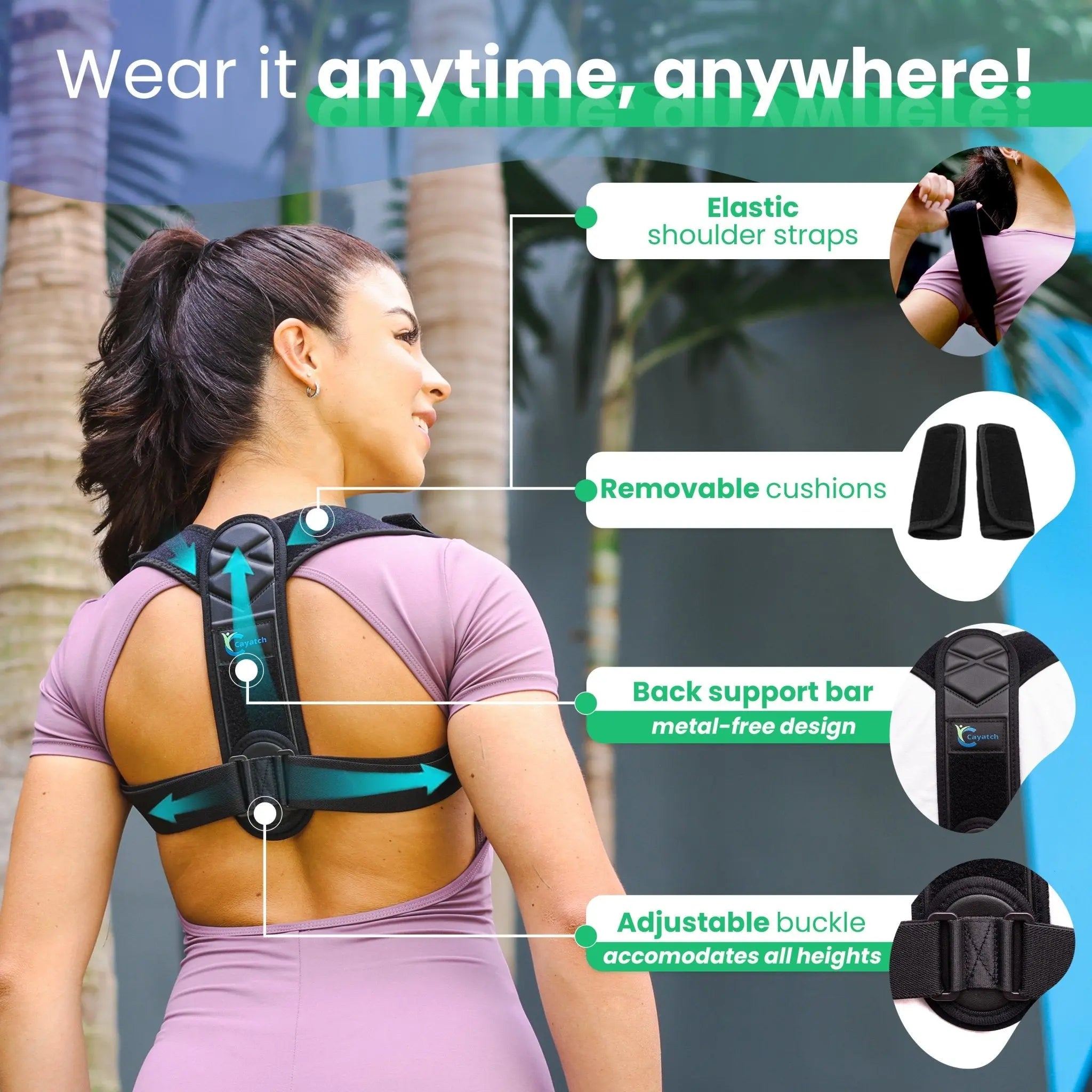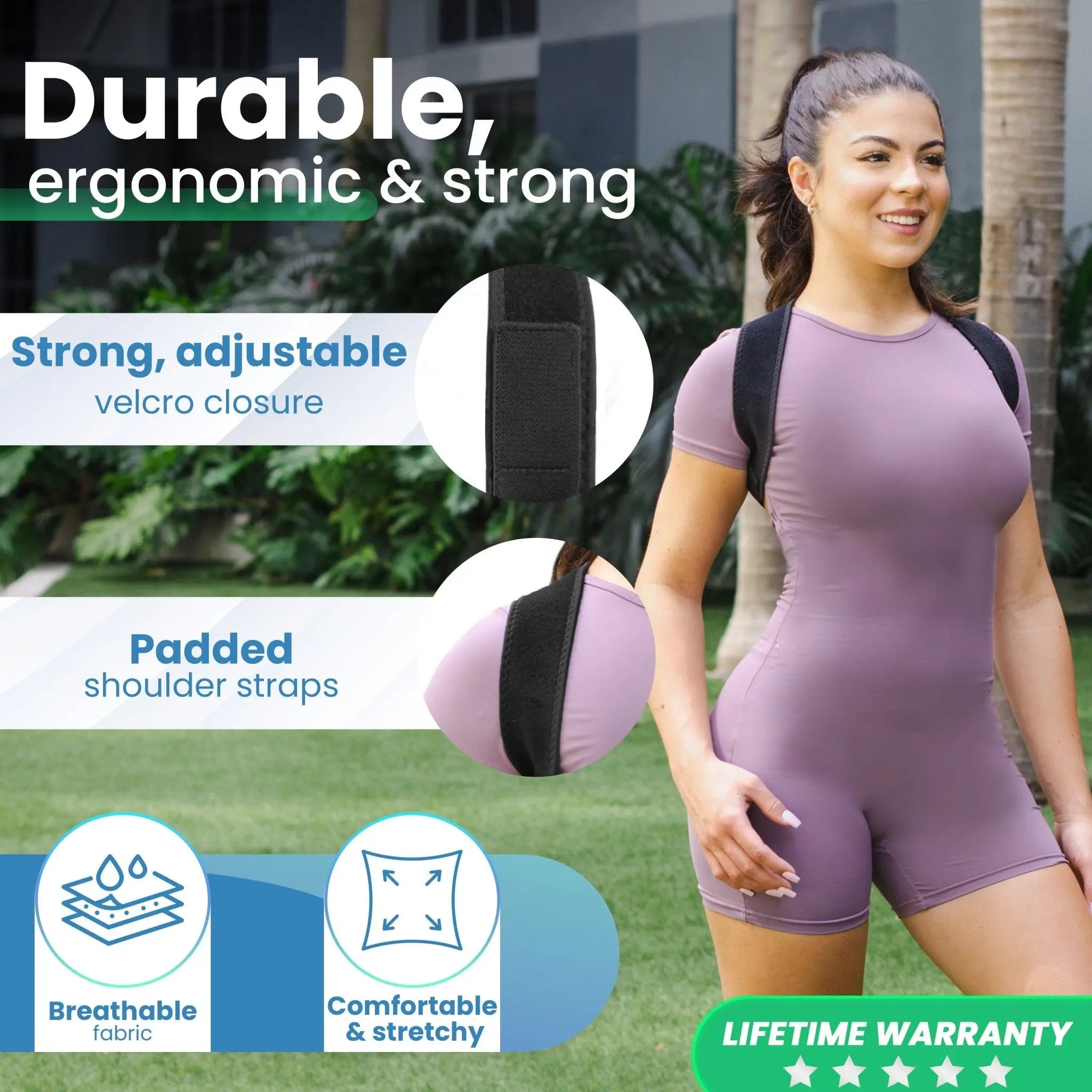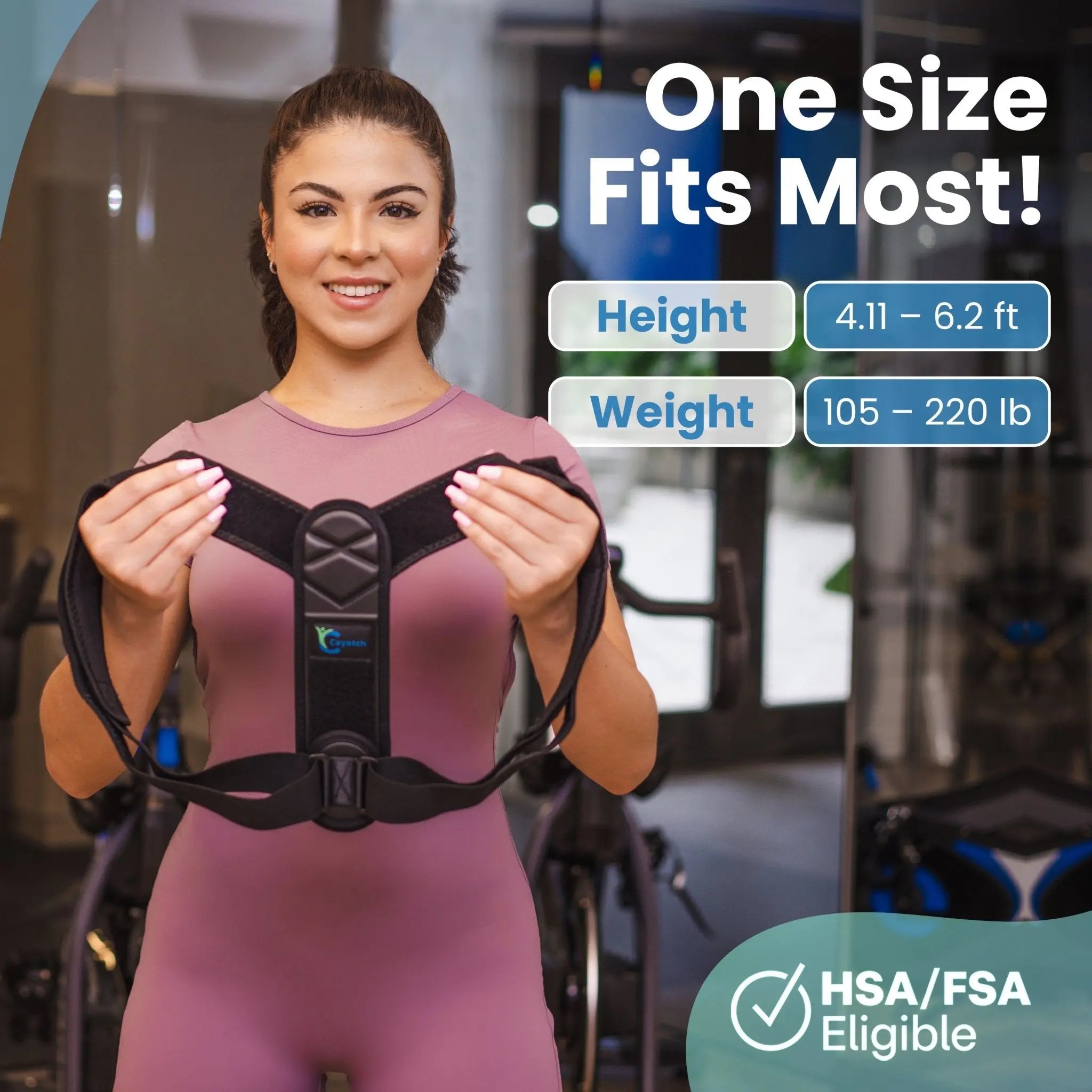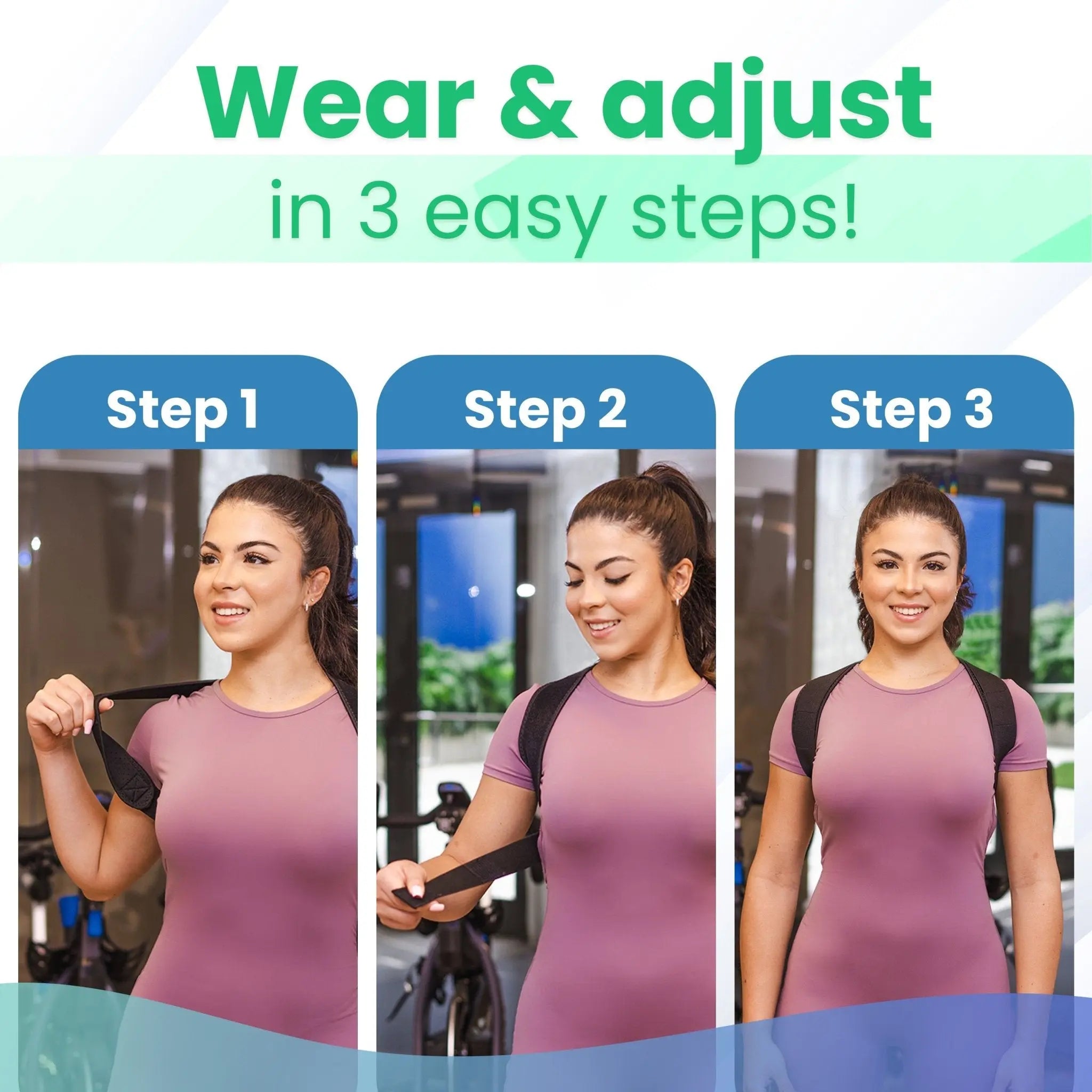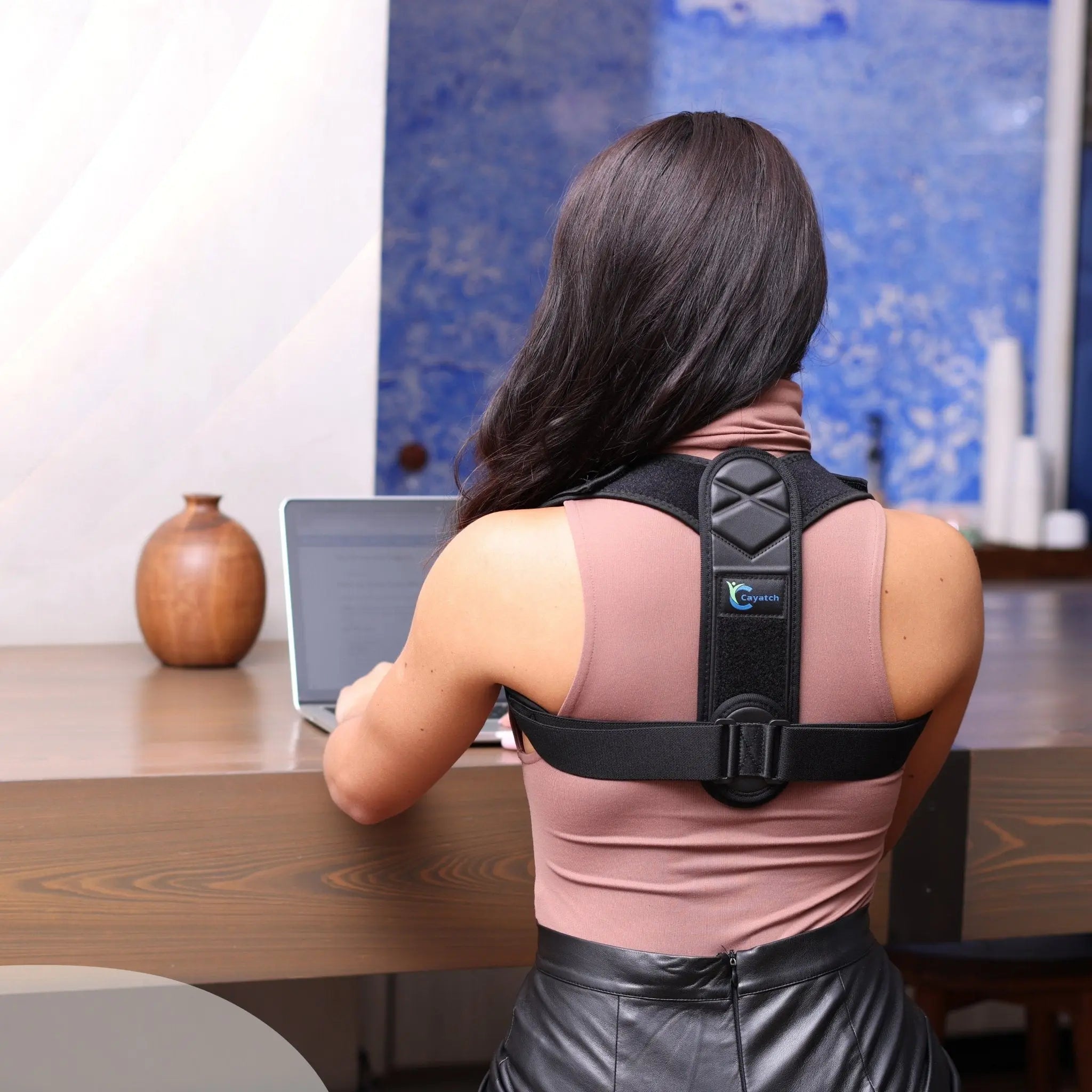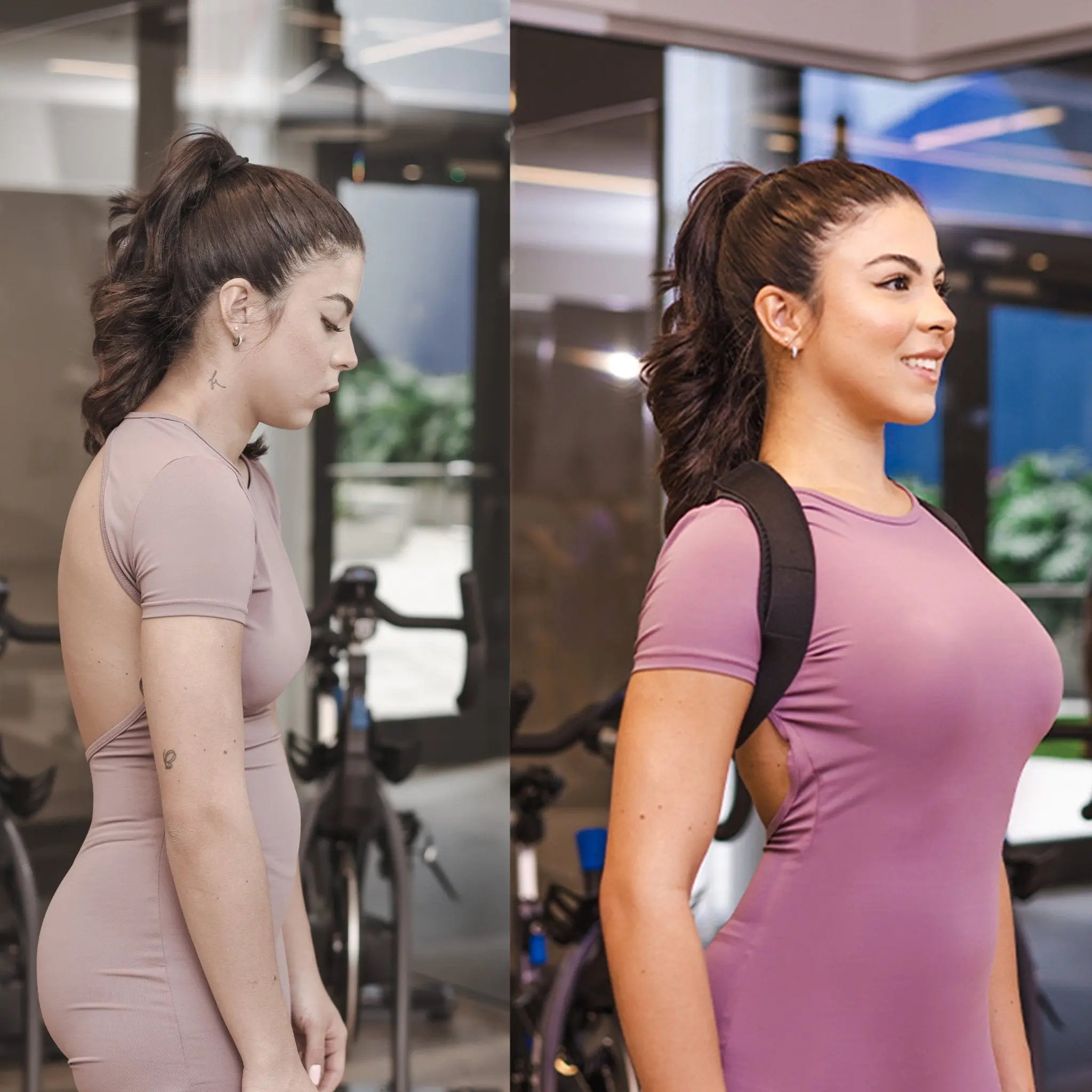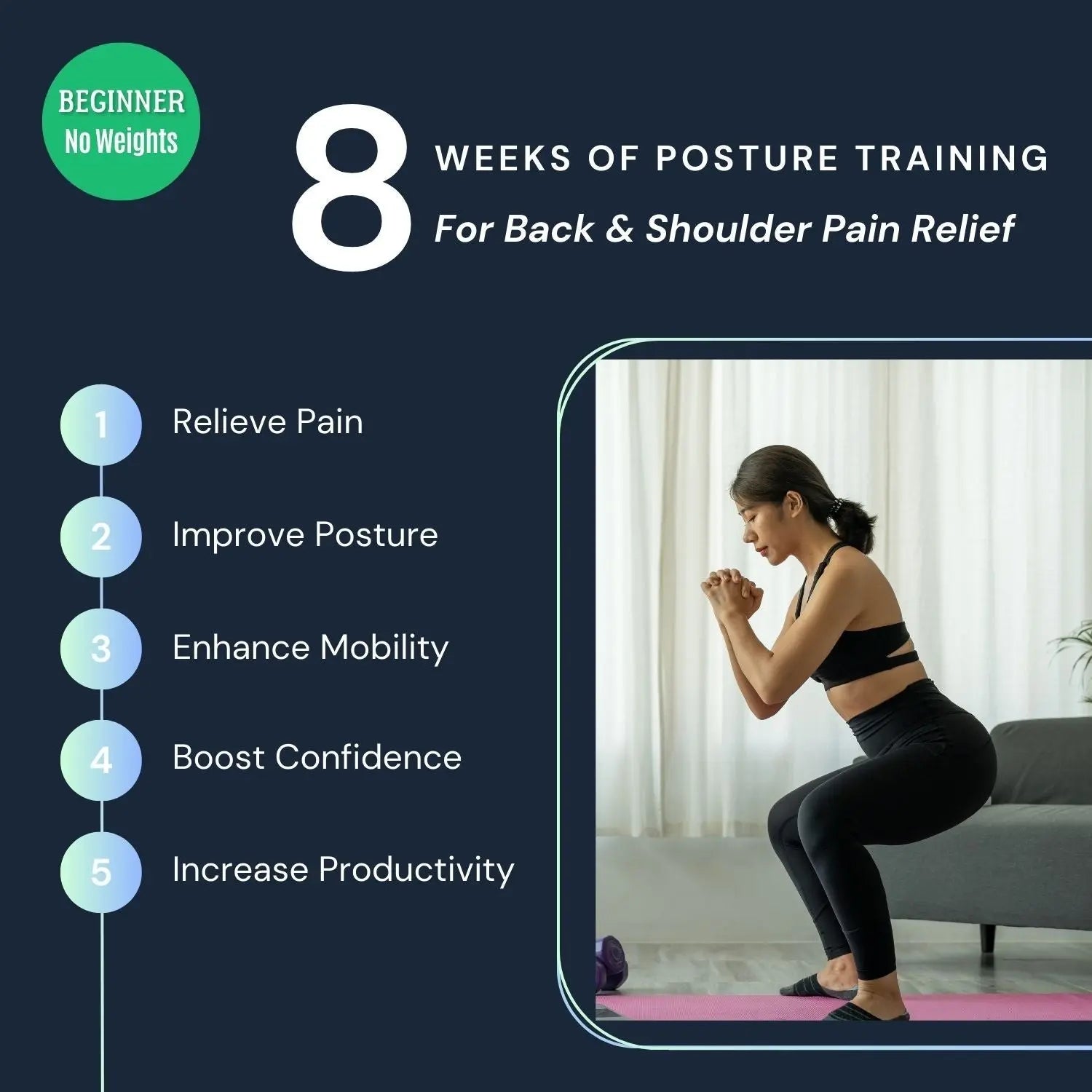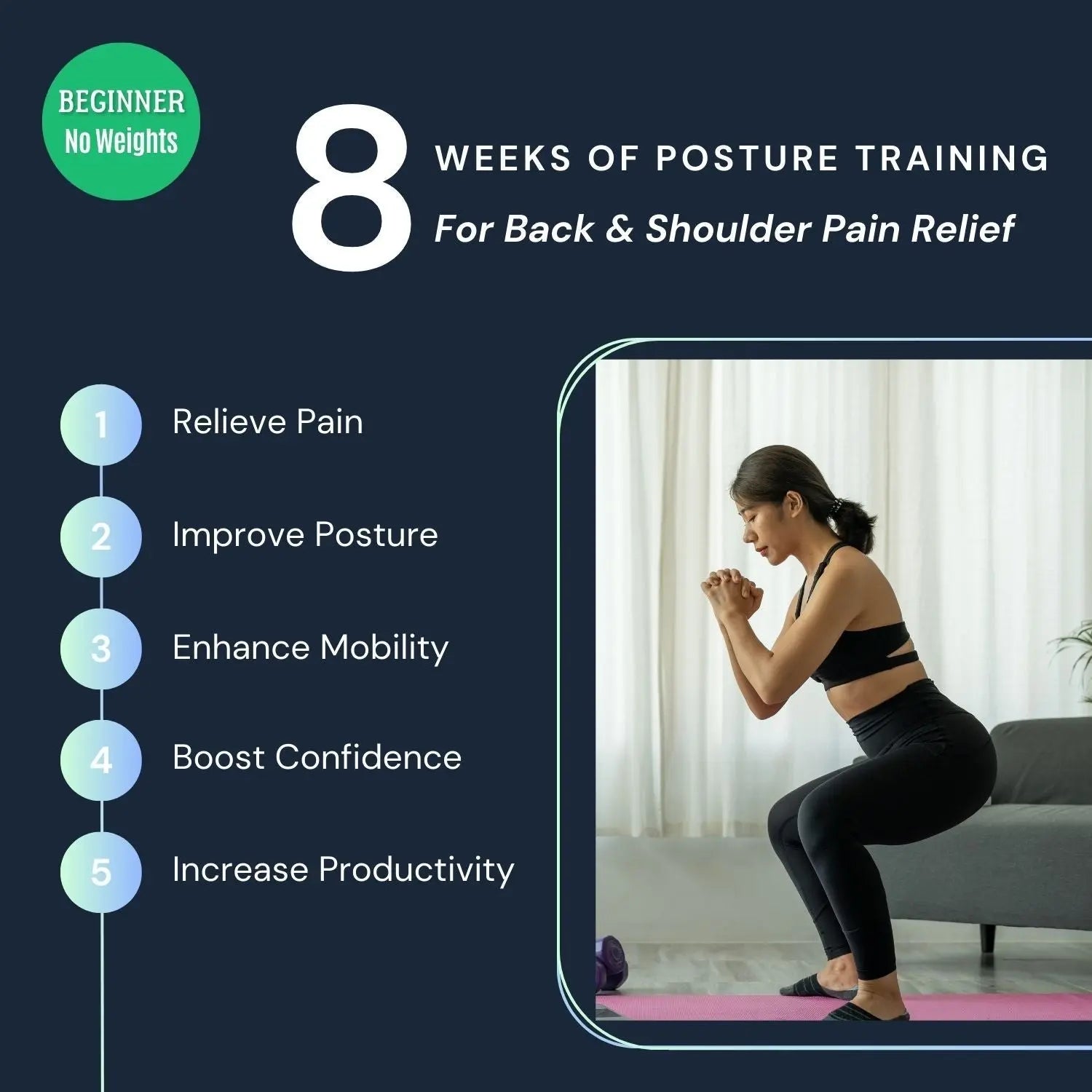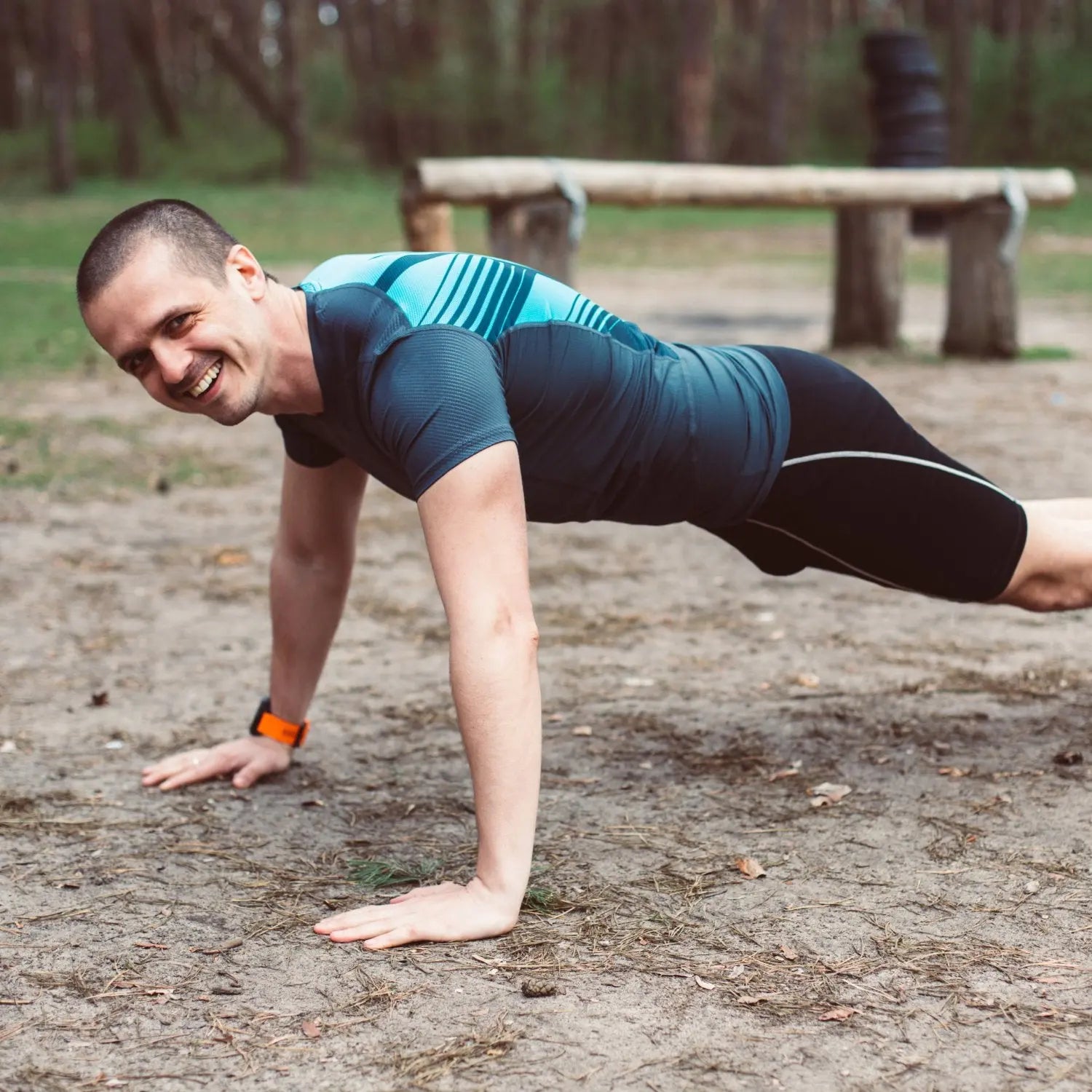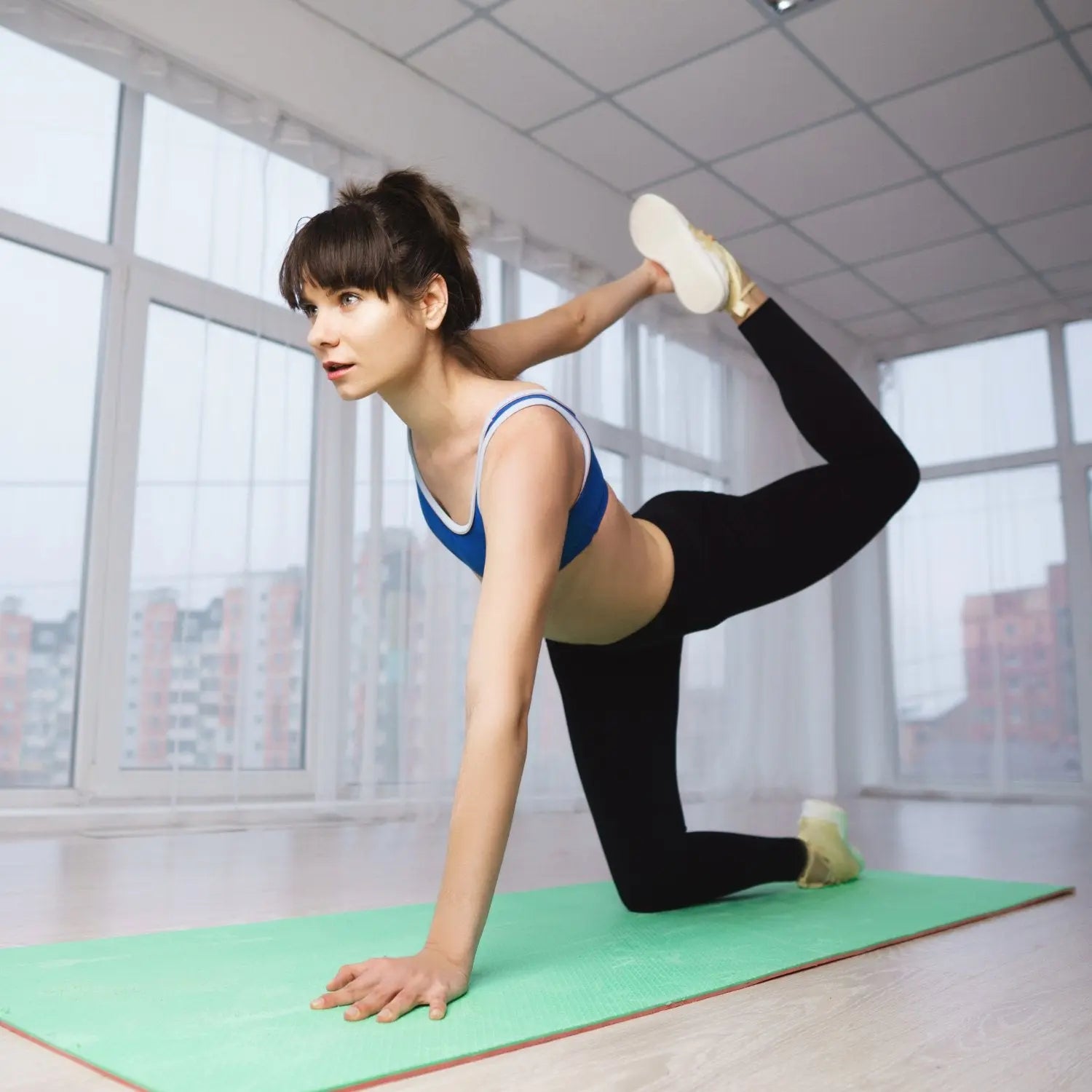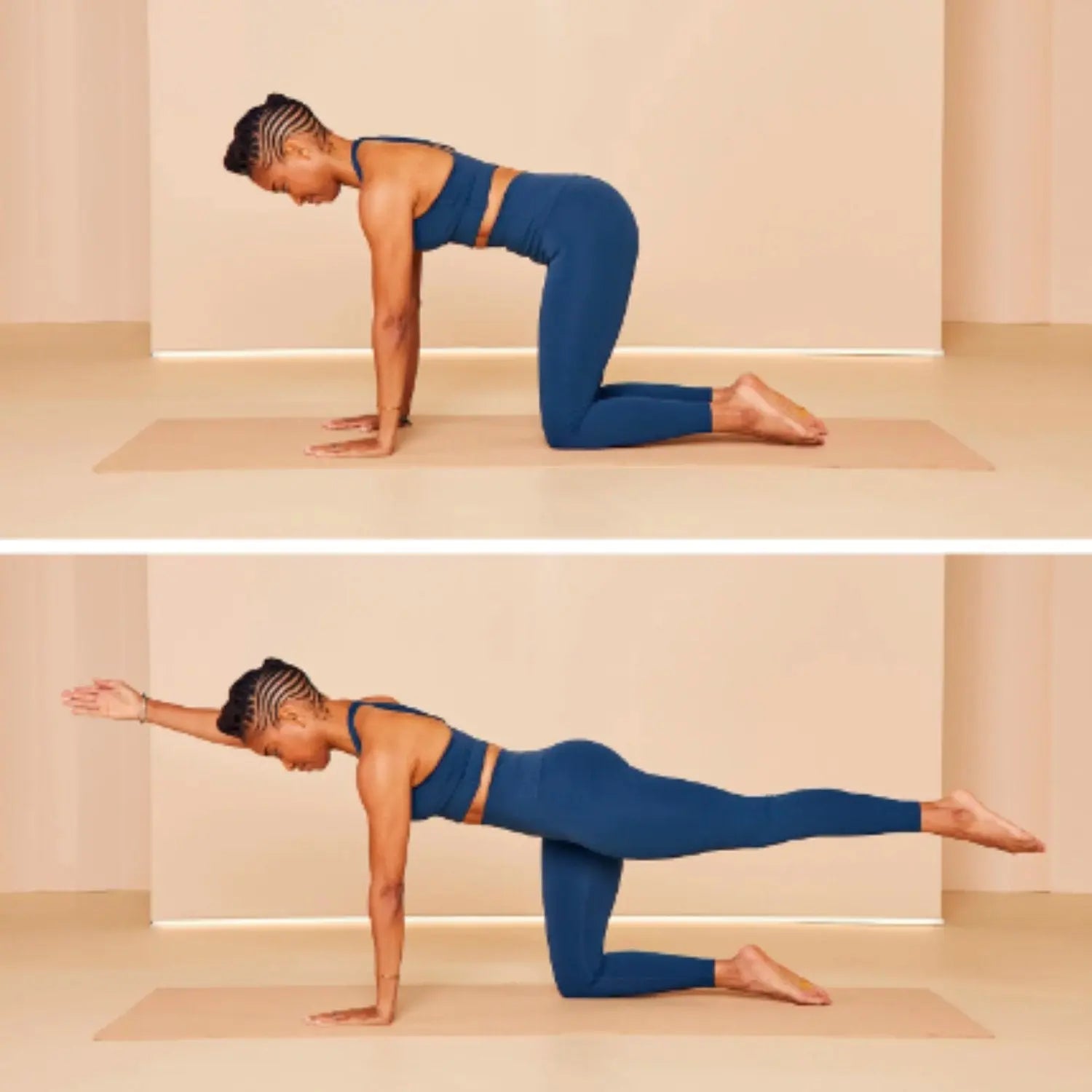How To Fix Hunchback Posture | The Expert Opinion

Poor posture has become an issue as we unintentionally slouch at desks or on couches, causing disorder to our spine. Such a spinal disorder is hunchback. Generally, it can happen to anyone and treatment is straightforward. So, how to fix hunchback posture.
Exercise and stretches, posture awareness, corrective devices like invasive belts, etc. are the best options to fix hunchback. Moreover, you can solve this disorder by maintaining a healthy spinal curvature.
This guide discusses sings, symptoms and causes of hunchback. Also, you will learn effective solutions to correct hunchback posture.
What is Hunchback Posture?

Hunchback is a condition characterized by an excessive outward curvature of the spine. It is particularly noticeable in the upper back around the thoracic region, located between the neck and ribs.
This curvature leads to a forward bending, creating a visual appearance of hunching or slouching. It is often colloquially referred to as “hyperkyphosis” or "roundback."
Natural curves of our spine support posture and help in standing upright. An abnormal increase in curvature can adversely impact the body. Thus, the abnormal curve makes standing challenging.
Although hyperkyphosis typically does not pose health concerns, it can result in self-consciousness about one's appearance.
In severe cases, hunchback may lead to pain or breathing difficulties. During such conditions, consider surgical options for correction.
Other names for hunchback include:
- Dowager's hump
- Thoracic kyphosis
- Hyperkyphosis
- Roundback
- Scheuermann's Kyphosis (though this is a specific type of kyphosis caused by vertebral wedging)
Recognizing the Signs and Symptoms

Physicians use the term hyperkyphosis to describe a persistent forward-leaning posture. Common signs and symptoms include a forward head posture and the loss of the normal cervical curve.
Hunchbacks’ symptoms are:
- Rounded shoulders or a noticeable hump on the back
- Back or neck pain and stiffness
- A sensation of the head being excessively heavy or experiencing fatigue in the back or neck muscles
- Tension headaches
This condition affects both men and women, with an increased likelihood during middle age.
Causes of Hunchback Posture

A healthy spine consists of cylindrical vertebrae stacked in a column-like structure. Hyperkyphosis emerges when the vertebrae in the back take on a more wedge-shaped form. Changes in vertebral shape can result from various factors:
Whether it's poor posture habits, muscle imbalances, or underlying medical issues, targeted exercises and ergonomic adjustments are vital for proper spinal alignment.
Preventing hunchback involves maintaining good posture, especially during activities like computer or TV use.
Core-strengthening exercises also contribute to overall spinal health, helping to avoid the development of a hunchback posture.
The excessive use of smartphones, tablets, and laptops results hunchback conditions. Adopting a slouched, head-forward position during device usage becomes a common behavior.
Here are the top causes of hunchback.
1. Prolonged Sitting
Extended period of sitting is a significant contributor to hunchback. Prolonged sitting places the spine in a forward-bent position, leading to chronic misalignment.
2. Impact of Technology
Recognizing the specific cause of hunchback posture is essential for correct treatment. Such a posture increases the stress on the upper back and neck, causing hunchback.
3. Weight and Load Distribution
Carrying heavy loads, such as backpacks filled with books, contributes to hyperkyphosis. The strain from the added weight affects the natural alignment of the spine. It potentially leads to the development of a hunchback posture.
4. Effects of Poor Ergonomics
Inadequate ergonomic arrangements, particularly in desktop computer setups, resulting the issue. When workstations lack proper ergonomics, individuals are prone to adopting awkward postures. As a result, you may experience hunchbacks.
5. Aging Process and Muscle Tone Loss
The natural aging process plays a role in hunchback posture. As we age, there is a tendency to lose postural muscle tone.
As a result, we become more susceptible to hyperkyphosis. This age-related factor is estimated to affect 20% - 40% of older adults, according to NCBI.
6. Underlying Medical Conditions
Severe cases of hyperkyphosis may result from medical conditions like compression fractures, osteoporosis, or congenital issues. Identifying and addressing these specific conditions is crucial for effective correction and management.
7. Fractures
Breaks in vertebrae can lead to spinal curvature, with compression fractures being the most common. However, mild compression fractures may not exhibit noticeable signs or symptoms.
8. Osteoporosis
Weakened bones, especially in older women and individuals on prolonged corticosteroid therapy, can contribute to spinal curvature. Weakened vertebrae are prone to compression fractures.
9. Disk Degeneration
The soft, circular disks between spinal vertebrae flatten and shrink as we age. It contributes to kyphosis.
10. Scheuermann's Disease
Also known as Scheuermann's kyphosis, this condition typically begins during the pre-pubertal growth spurt.
Other Problems
Improper development of spinal bones before birth or medical conditions such as Ehlers-Danlos syndrome can also cause hyperkyphosis in children.
How to Correct Hunchback Posture
Michael Jones, MS, CErg says that improving your hunchback should be one of your top priorities if you're dealing with chronic pain.
Hunchback can be corrected through a combination of exercises, stretches, posture awareness, corrective devices, yoga and Pilates, lifestyle changes, and seeking professional guidance.
Below is a detailed guide outlining various strategies to correct hunchback posture.
1. Exercises and Stretches to Fix Hunchback Posture
Thoracic Extension
- Step 01: Sit or stand comfortably with your back straight.
- Step 02: Place your hands behind your head, elbows pointing outward.
- Step 03: Gently arch your upper back, focusing on extending the thoracic spine.
- Step 04: Hold for 10-15 seconds, repeating 10 times.
- Step 01: Sit or stand with a straight spine.
- Step 02: Squeeze your shoulder blades together, bringing them towards your spine.
- Step 03: Hold the squeeze for 5-10 seconds, then release.
- Step 04: Repeat 10-15 times.
- Step 01: Sit or stand with your spine aligned.
- Step 02: Gently tuck your chin towards your chest, keeping your back straight.
- Step 03: Hold for 5-10 seconds, feeling a stretch in the neck and upper back.
- Step 04: Repeat 15-20 times.
- Step 01: Stand in a doorway with your arms on the door frame at shoulder height.
- Step 02: Step forward with one foot, allowing your chest to lean into the doorway.
- Step 03: Feel a stretch across the chest and shoulders.
- Step 04: Hold for 15-30 seconds, repeating 3-5 times.
2. Posture Awareness
Ergonomics
Ensure that your workspace is ergonomically set up, with the computer screen at eye level and a supportive chair. Also, use a cushion or lumbar roll to maintain the natural curve of your lower back.
Regular Breaks
Take short breaks every 30 minutes to stand, stretch, and walk around. Moreover, perform quick posture checks during breaks to prevent prolonged periods of poor posture.
3. Corrective Devices
Posture Correctors
Wear a posture corrector that aligns your shoulders and upper back, providing gentle reminders to maintain proper posture. Choose a comfortable and adjustable posture corrector for daily use.
Posture Apps
Use mobile apps that provide real-time feedback on your posture. Set reminders for regular posture checks throughout the day.
Ergonomic Chairs
Invest in an ergonomic chair with lumbar support to maintain a neutral spine position. Adjust the chair height to ensure your feet are flat on the floor with knees at a 90-degree angle.
Supportive Pillows
Use a cervical pillow to support the natural curve of your neck while sleeping. Place a small pillow behind your lower back when sitting for extended periods.
4. Yoga and Pilates
Cat-Cow Stretch (Yoga)
- Step 01: Start on your hands and knees in a tabletop position.
- Step 02: Inhale, arching your back, and lifting your head (Cow Pose).
- Step 03: Exhale, rounding your spine and tucking your chin to your chest (Cat Pose).
- Step 04: Flow between these poses for 1-2 minutes.
Pilates Roll-Up
- Step 01: Lie on your back with your legs extended and arms overhead.
- Step 02: Inhale, engage your core and slowly roll up to a sitting position.
- Step 03: Exhale as you reverse the motion, rolling back down.
- Step 04: Repeat for 10-15 reps.
5. Lifestyle Changes for Better Posture
- Maintain a Healthy Weight: Extra weight can strain the spine, contributing to poor posture.
- Stay Active: Regular exercise, especially activities that strengthen the core and back muscles, supports overall posture.
- Stay Hydrated: Proper hydration helps maintain the elasticity of spinal discs.
6. Seek Professional Guidance
Doctors
Consult with a healthcare professional to rule out underlying medical conditions contributing to hunchback. Receive guidance on appropriate exercises designed to your specific needs.
Chiropractors
Chiropractors can provide adjustments to the spine, addressing misalignments that contribute to hunchback posture. They may also offer advice on exercises and stretches for ongoing care.
Physical Therapists
Physical therapists can design a personalized rehabilitation program focusing on strengthening and flexibility. They provide hands-on guidance to ensure exercises are performed correctly.
Remember, correcting hunchback posture is a gradual process that requires consistency and a multifaceted approach.
By adding these strategies into your daily routine can contribute to improved posture, reduced pain, and enhanced overall spinal health.
Always consult healthcare professionals for personalized advice based on your specific condition.
Frequently Asked Questions (FAQs)
Can hunchback be reversed?
Yes, hunchback posture can be reversed through exercises, lifestyle changes, and proper interventions, depending on the underlying causes and severity.
But you need to ensure consistency in whichever method you choose.
Is it possible to fix hunched posture?
Yes, it is possible to fix hunched posture with a combination of exercises, stretching, and strengthening. Besides, you need to adapt to better posture habits by being mindful of your posture.
How long does it take to fix a hunchback?
It may take 1-2 months to see a visible change. This may vary depending on factors such as the severity of the condition, consistency of exercises, and individual response.
Is hunchback permanent?
No, the hunchback posture is not permanent. With appropriate measures, including exercises, postural awareness, and lifestyle changes, it can be improved quite fast.
Wrapping Up
Hunchback condition can be effectively managed through the straightforward exercises outlined in this guide. However, if consistent engagement in these exercises doesn't lead to improvement, it's crucial to consider consulting a doctor or chiropractors.
Along with targeted exercises, ensure awareness of your posture throughout the day. It is essential for long-term correction. Stay mindful and proactive in your efforts to promote a healthier and more upright upper back alignment.






















